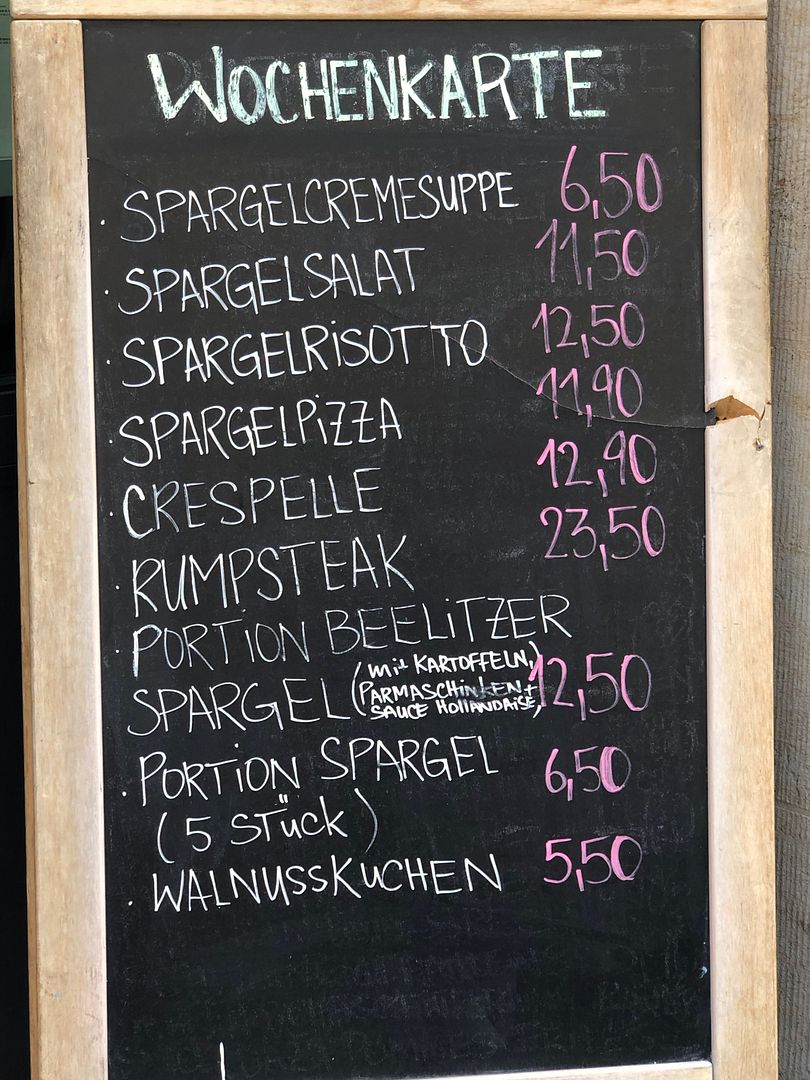5000km Euro track&road in a Panamera
#1
I had a plan to pick up a 2018 Panamera Turbo Sport Turismo at the factory, and drive South to Italy before coming North to try the car on track, even though it is no GT3.
Then came Dieselgate. Porsche and all manufacturers cancelled all European deliveries for a while. The car was shipped to Canada,and then languished in port for many weeks due to new requirements to certify it for emissions compliance. Instead of a nice Autumn trip in 2017, it showed up in February of 2018 in a vicious Canadian winter.
The car is the regular Turbo. Spec did not include the elaborate driver aids such as a lane change assist, night vision assist etc. ), nor did it need a massively expensive sound system; all chrome and model badging was deleted, wood was replaced with CF inside, and Sport Chrono (which includes push-to-pass) and torque vectoring was specified. The car has extra factory sound insulation and was immediately given 3M plastic on the front plus ceramically coated.
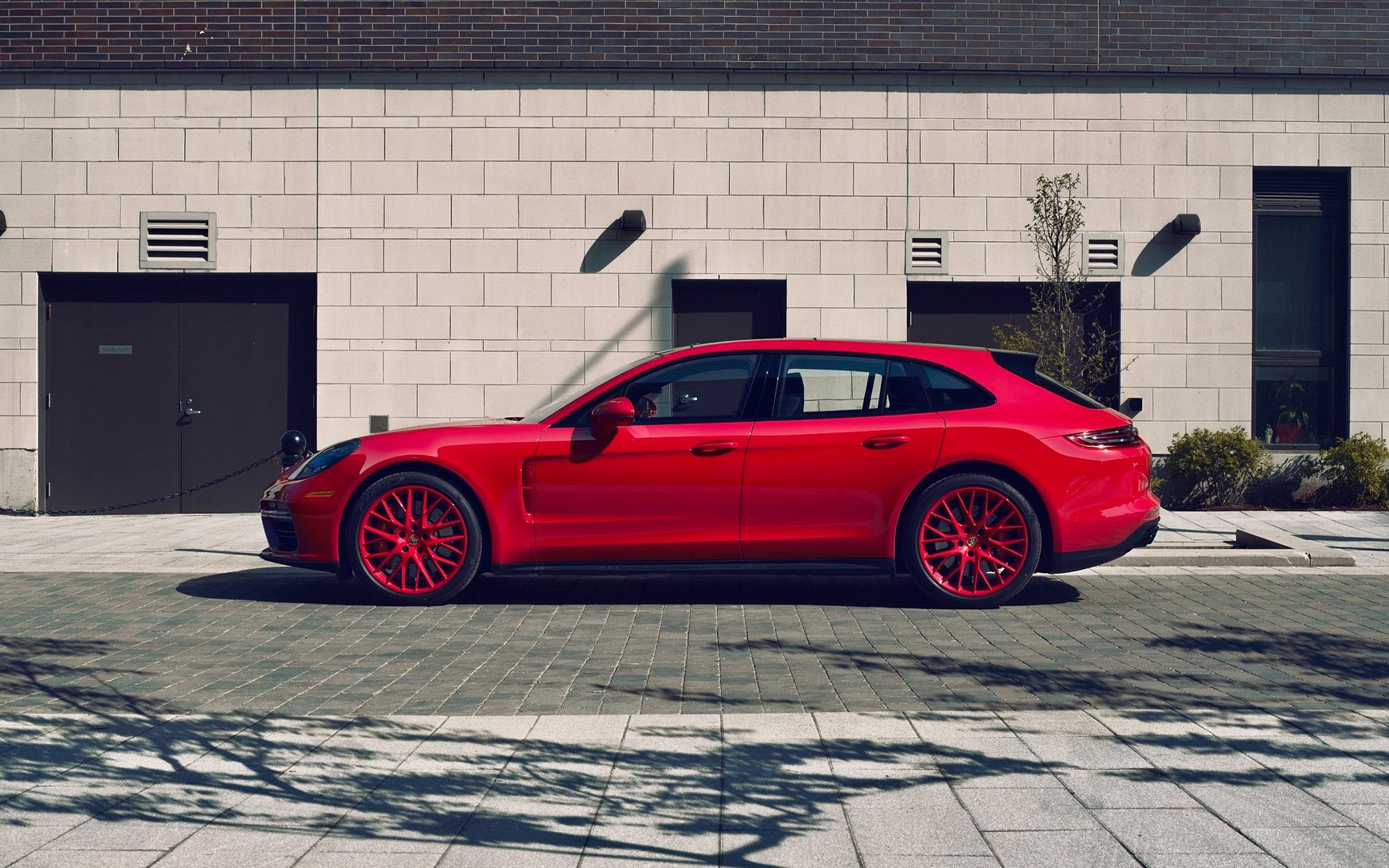
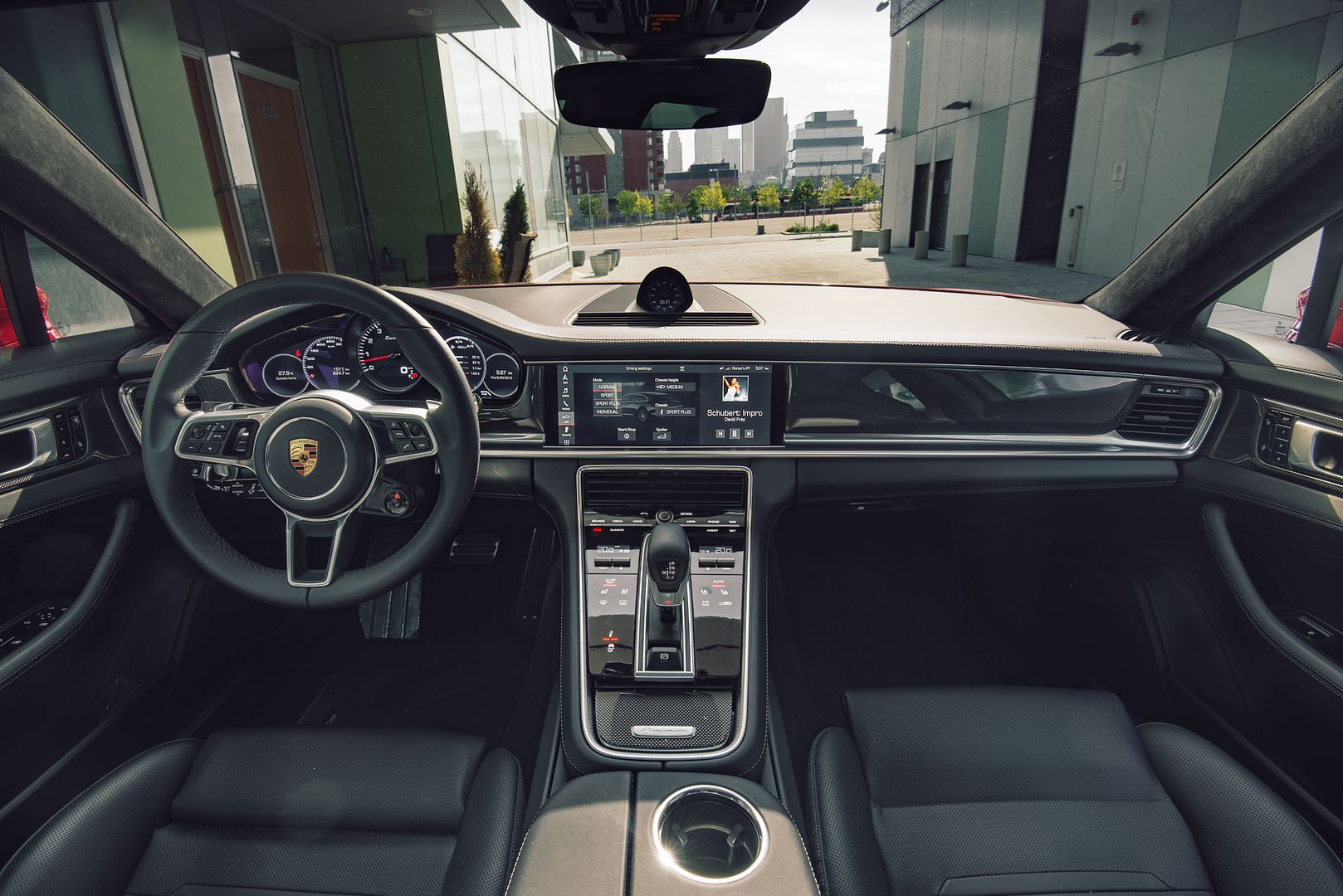
Disappointed at not getting factory delivery, the decision was made to ship it back.
To get a car back to Europe requires customs brokerage, transit insurance, road insurance and a reliable carrier. It also takes lots of time. Recommended transit time is six weeks.
The car has to be containerized in Toronto, sent by rail to Halifax Nova Scotia, loaded on a ship to Rotterdam, clear customs there, and then stored for delivery to Frankfurt. It is then loaded on a purpose-built truck and delivered to the hotel. A company called C.A.R.S International did all of the move with the exception of road insurance. They are excellent.
Booking hotels requires to start with an essential item - Proper parking. Forget about quaint country Inns, places that advertise available parking , in fact anything that does not guarantee parking.
I once had a one-day-old M6 and arrived in a quaint town to discover it was pedestrianized and had to park in a very tight space street space, then drag my case for a kilometre over picturesque cobbles and drag it up three flights of picturesque bloody stairs.
I had a hotel in Innsbruck tell me I had not booked the parking separately ( even though they had said it was available)and had to find a place to park a new (and wide) GT3RS. I have had numerous places where the spaces were too tight for a wide car.
So, hotel bookings matter.
Here we go for Frankfurt.
The trip will run across the Harz Mountains and North Central Germany to Berlin, back across the Baltic Coast and up to Denmark, back through Hanover and Cologne to the Nürburgring, then..Spa,Antwerp, Ghent., back to Frankfurt and out.
Hopefully.
Then came Dieselgate. Porsche and all manufacturers cancelled all European deliveries for a while. The car was shipped to Canada,and then languished in port for many weeks due to new requirements to certify it for emissions compliance. Instead of a nice Autumn trip in 2017, it showed up in February of 2018 in a vicious Canadian winter.
The car is the regular Turbo. Spec did not include the elaborate driver aids such as a lane change assist, night vision assist etc. ), nor did it need a massively expensive sound system; all chrome and model badging was deleted, wood was replaced with CF inside, and Sport Chrono (which includes push-to-pass) and torque vectoring was specified. The car has extra factory sound insulation and was immediately given 3M plastic on the front plus ceramically coated.


Disappointed at not getting factory delivery, the decision was made to ship it back.
To get a car back to Europe requires customs brokerage, transit insurance, road insurance and a reliable carrier. It also takes lots of time. Recommended transit time is six weeks.
The car has to be containerized in Toronto, sent by rail to Halifax Nova Scotia, loaded on a ship to Rotterdam, clear customs there, and then stored for delivery to Frankfurt. It is then loaded on a purpose-built truck and delivered to the hotel. A company called C.A.R.S International did all of the move with the exception of road insurance. They are excellent.
Booking hotels requires to start with an essential item - Proper parking. Forget about quaint country Inns, places that advertise available parking , in fact anything that does not guarantee parking.
I once had a one-day-old M6 and arrived in a quaint town to discover it was pedestrianized and had to park in a very tight space street space, then drag my case for a kilometre over picturesque cobbles and drag it up three flights of picturesque bloody stairs.
I had a hotel in Innsbruck tell me I had not booked the parking separately ( even though they had said it was available)and had to find a place to park a new (and wide) GT3RS. I have had numerous places where the spaces were too tight for a wide car.
So, hotel bookings matter.
Here we go for Frankfurt.
The trip will run across the Harz Mountains and North Central Germany to Berlin, back across the Baltic Coast and up to Denmark, back through Hanover and Cologne to the Nürburgring, then..Spa,Antwerp, Ghent., back to Frankfurt and out.
Hopefully.
#2
It never makes sense to start a road trip like this with jet lag, so took a couple of days in Frankfurt until the car was delivered. The Hilton at the airport is as good a place as any to stay until the car arrives.
Frankfurt today is a fairly anonymous and prosperous financial centre.
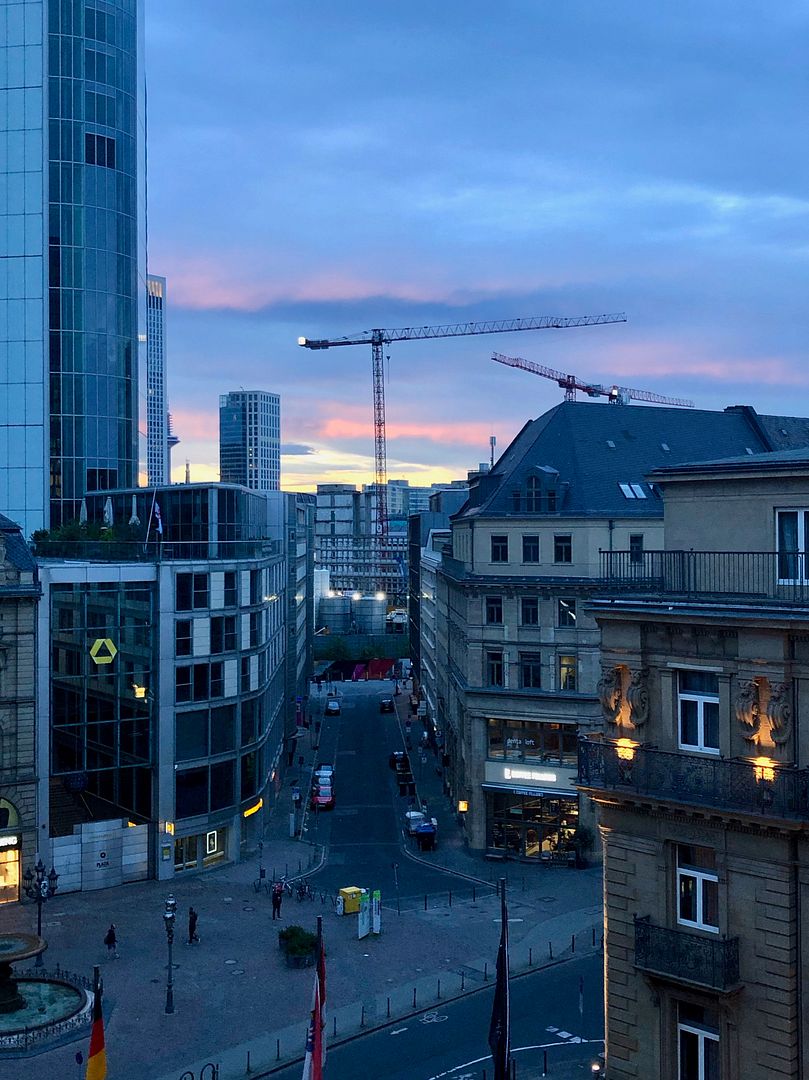
Before WW.2 it had a wonderful very old centre , but it was reduced to rubble. The historic area is really a post war rebuild. However, overall Frankfurt is really not a tourist destination.
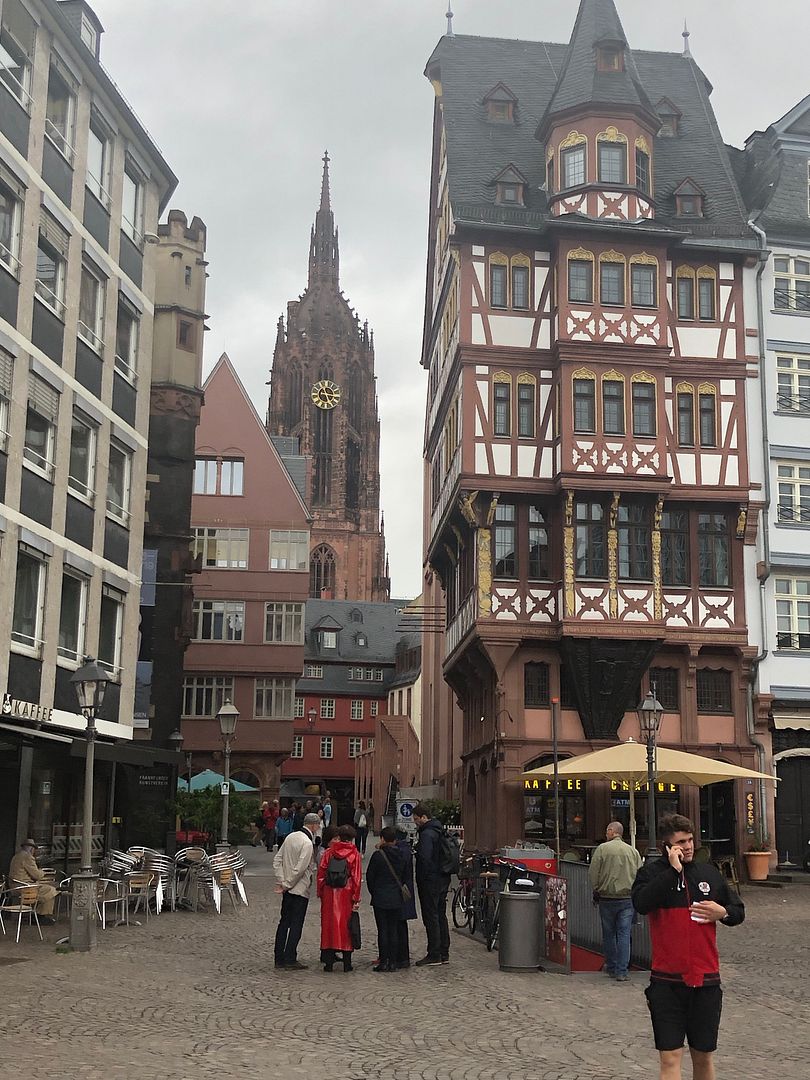

There is a reasonable historic museum, which has a diorama of Frankfurt before and after the bombing. There was nothing left.

A solitary car, an Adler, is display at the museum. Looks a bit like a Chrysler Airflow.
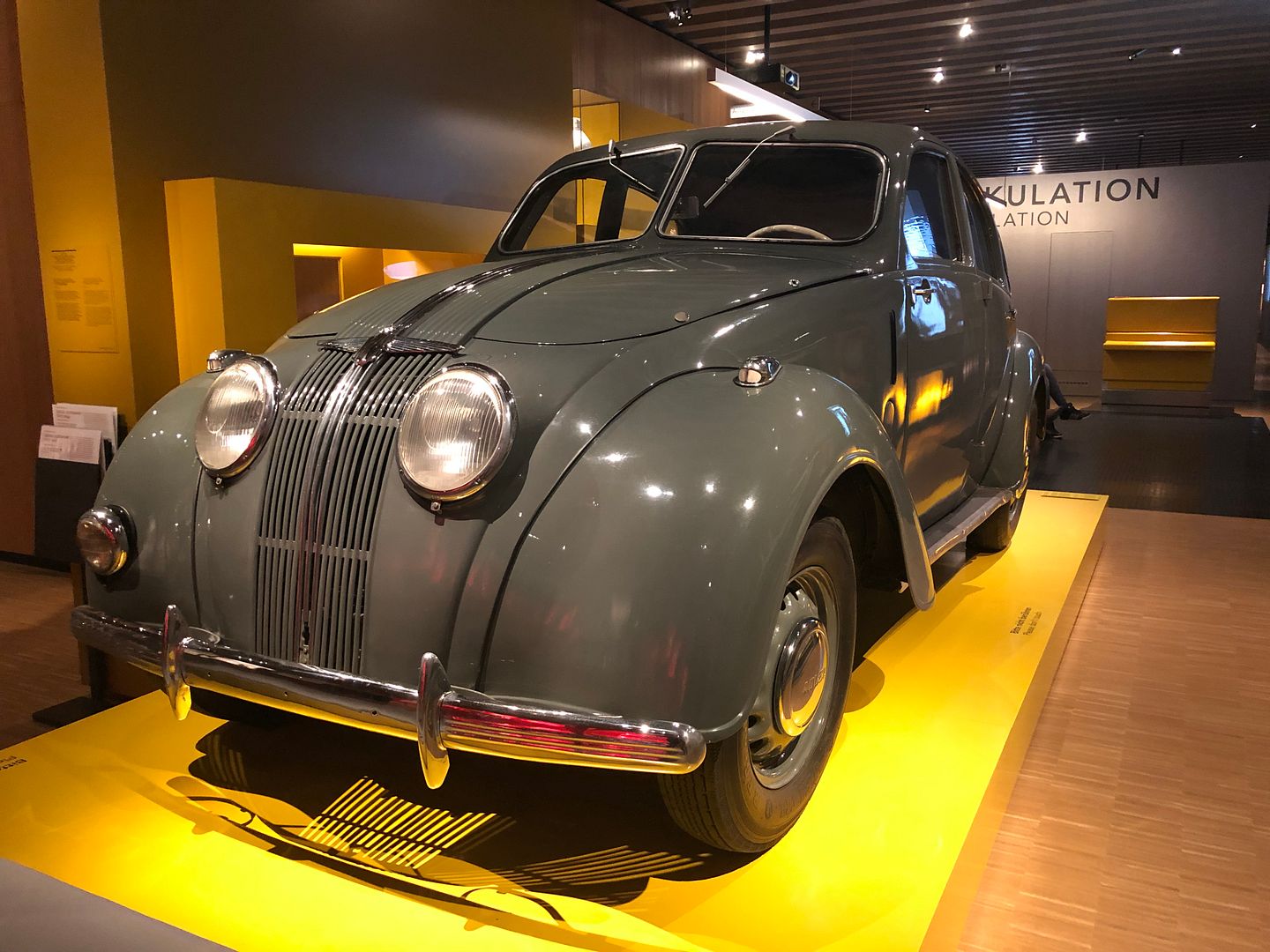
The museum is frank about the Holocaust in Frankfurt, and one of the more bizarre exhibits is a large canister of Zyklon B, and a souvenir plate of IG Farben who made it. After the war their huge offices became the centre of the US army occupation command.
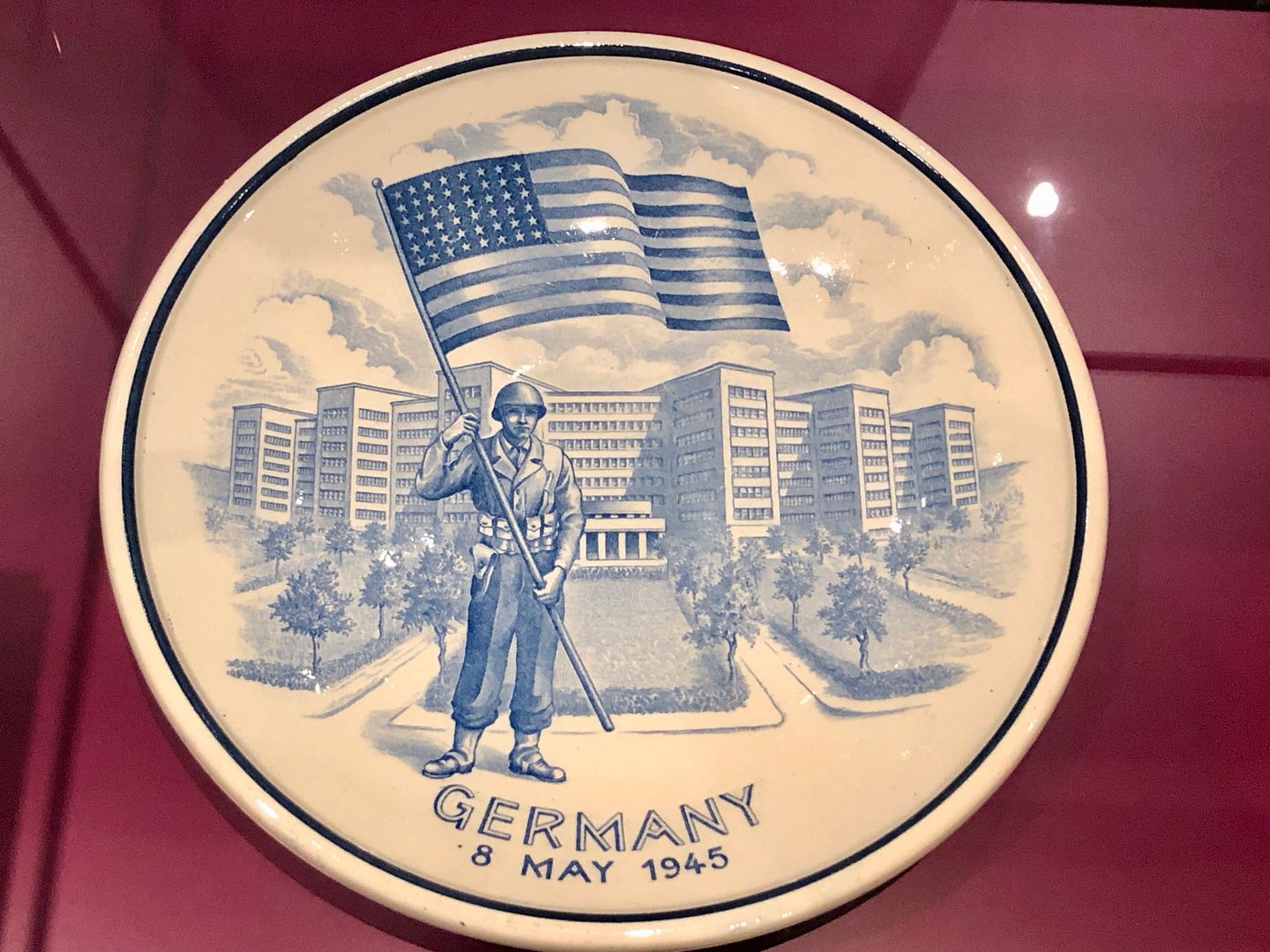
Frankfurt has quite a good art gallery; As usual a massive number of early portraits and landscapes, but there is a good modern art section. I understand that this is not for everybody so will keep this part short, as for some modern art is like this:

This view appears to be shared by some of the attendees:

There is actually some superb stuff here:
Two Self portraits by Max Beckmann

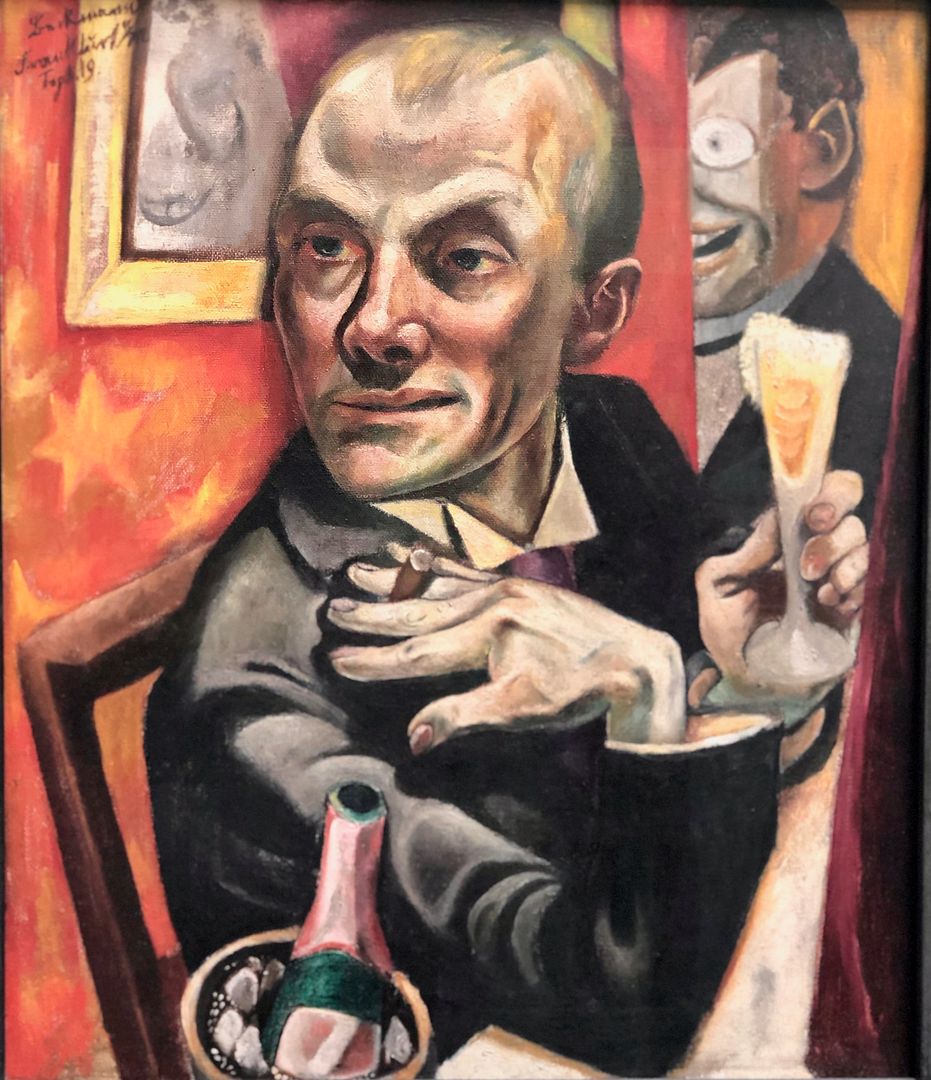
A very barren self portrait by Anselm Kiefer, made of lead
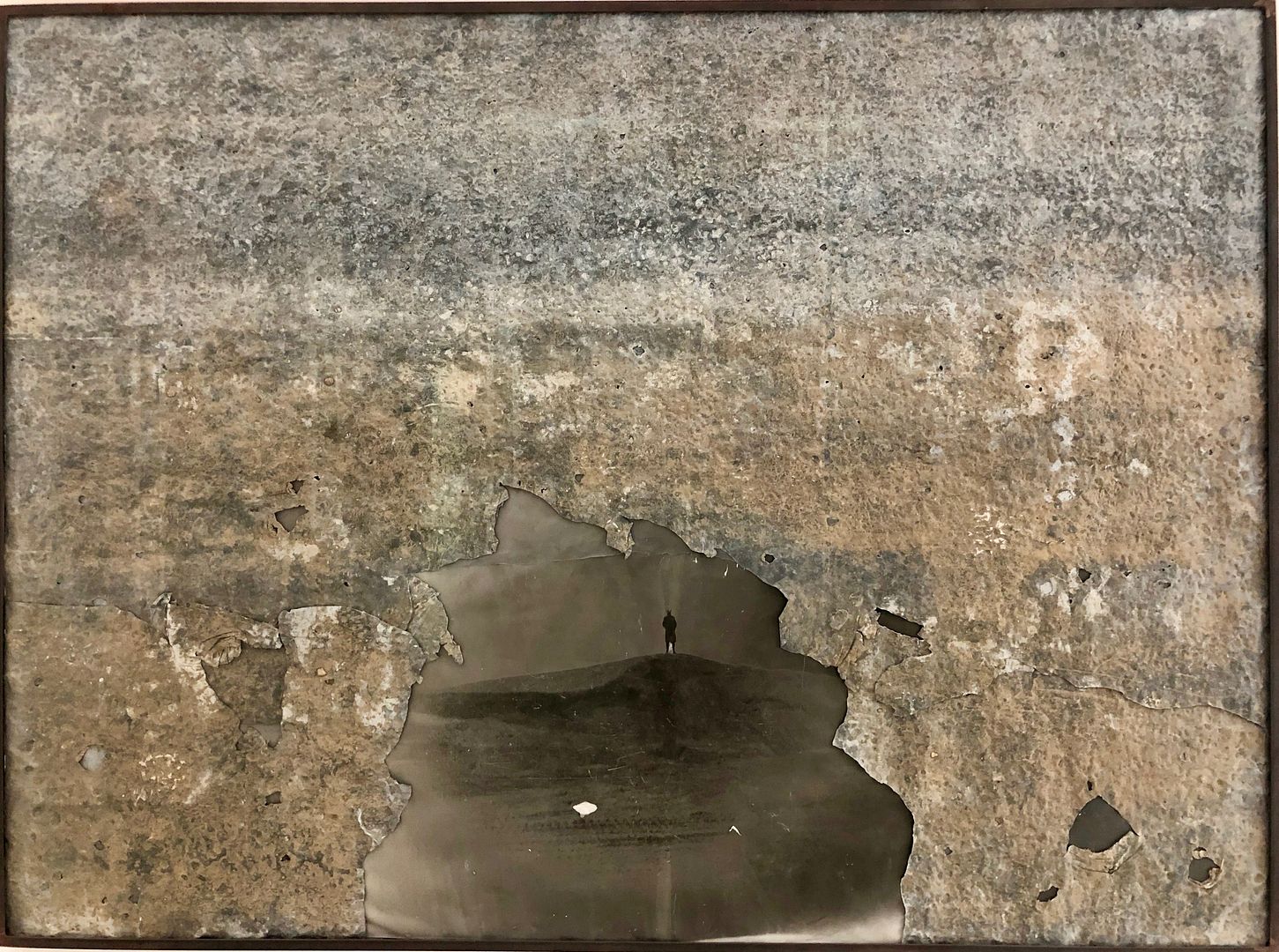
Next morning on schedule an anonymous unmarked blue truck pulls up at the airport the car is unloaded on time and in perfect shape, and its time to head out, TomTom fitted and the first destination area identified.
Its time to go.
Frankfurt today is a fairly anonymous and prosperous financial centre.

Before WW.2 it had a wonderful very old centre , but it was reduced to rubble. The historic area is really a post war rebuild. However, overall Frankfurt is really not a tourist destination.


There is a reasonable historic museum, which has a diorama of Frankfurt before and after the bombing. There was nothing left.

A solitary car, an Adler, is display at the museum. Looks a bit like a Chrysler Airflow.

The museum is frank about the Holocaust in Frankfurt, and one of the more bizarre exhibits is a large canister of Zyklon B, and a souvenir plate of IG Farben who made it. After the war their huge offices became the centre of the US army occupation command.

Frankfurt has quite a good art gallery; As usual a massive number of early portraits and landscapes, but there is a good modern art section. I understand that this is not for everybody so will keep this part short, as for some modern art is like this:

This view appears to be shared by some of the attendees:

There is actually some superb stuff here:
Two Self portraits by Max Beckmann


A very barren self portrait by Anselm Kiefer, made of lead

Next morning on schedule an anonymous unmarked blue truck pulls up at the airport the car is unloaded on time and in perfect shape, and its time to head out, TomTom fitted and the first destination area identified.
Its time to go.
#3
The first night out of Frankfurt was a Schlosshotel near Hameln that was virtually empty., (but had parking:

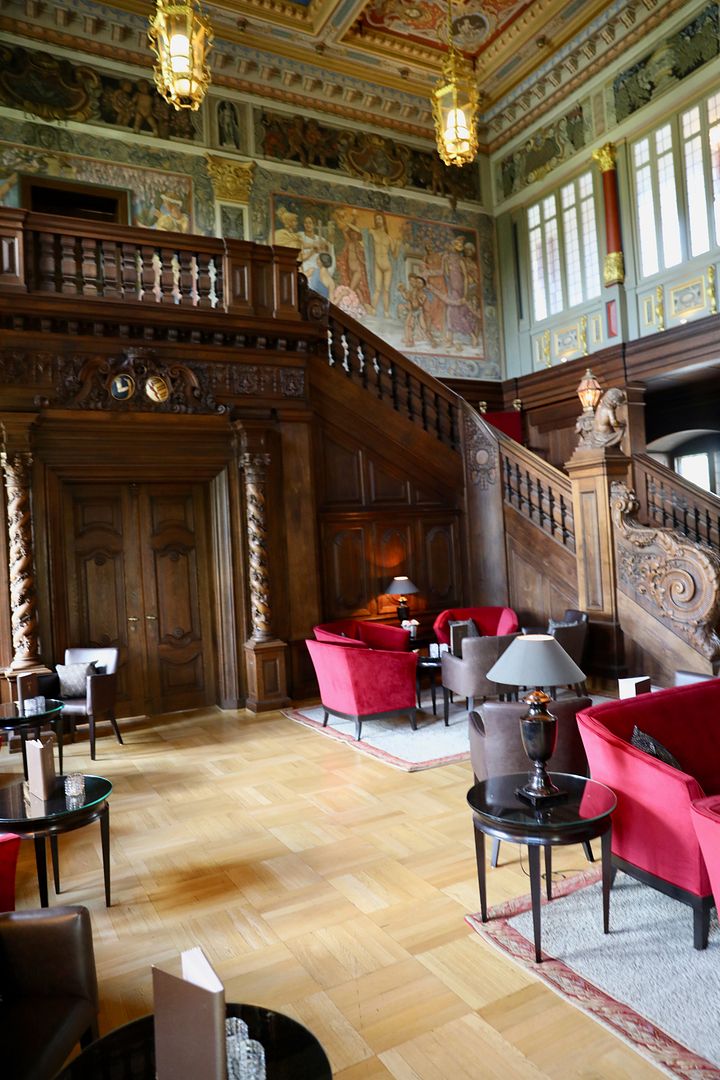
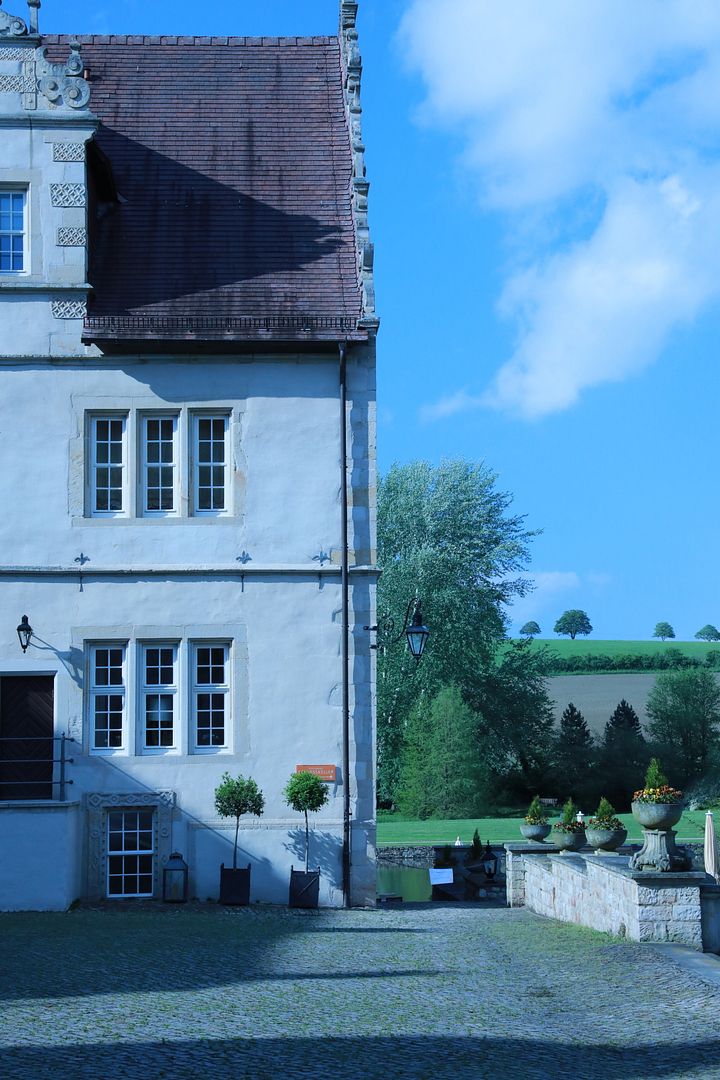
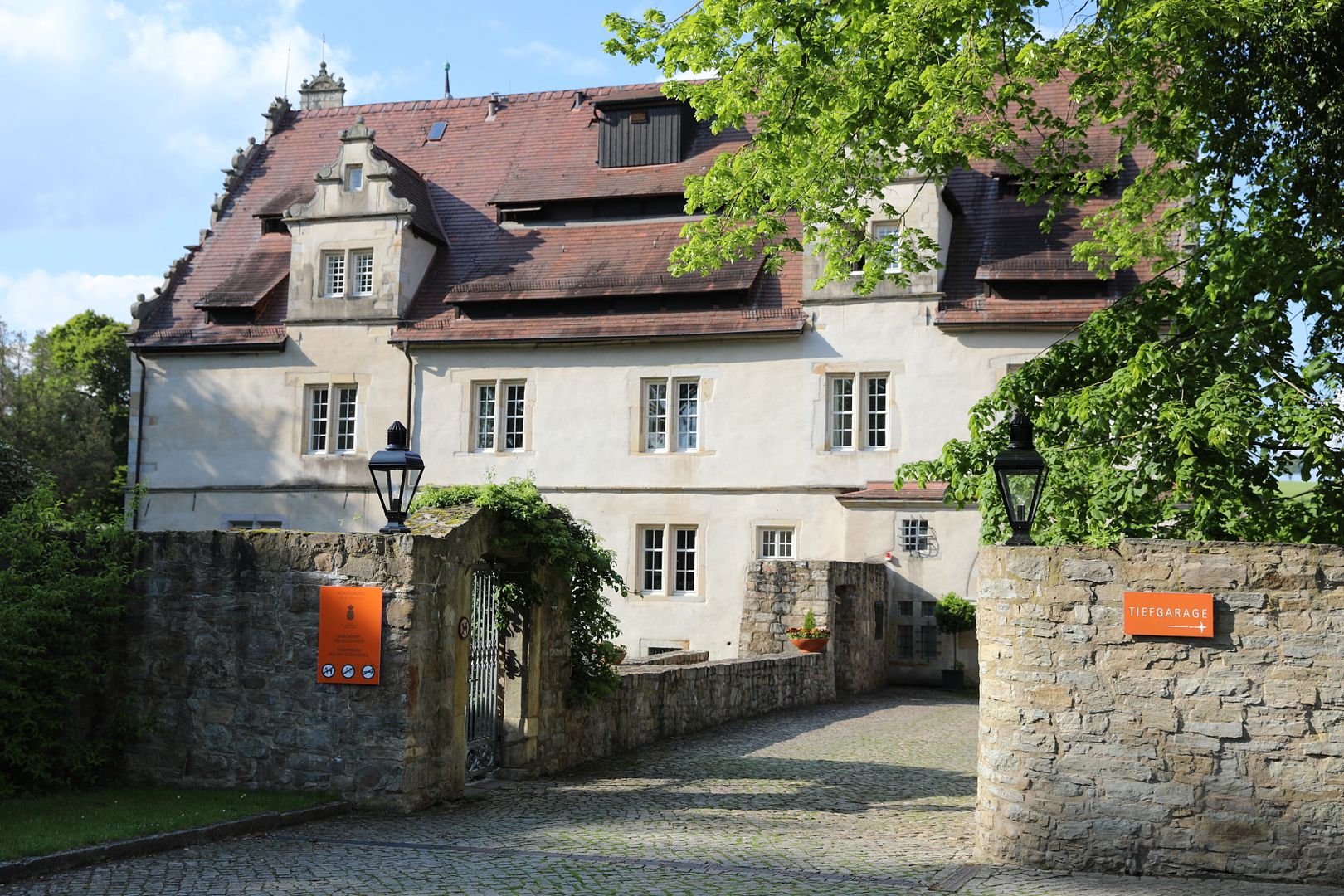
The setting was magnificent. Despite the spacious environment the entrance was very narrow, but then there was a spacious courtyard that dwarfs the car. The Schlosshotel Munchhausen is magnificent. Inside, the lobby is huge and timbered.
Dinner here is excellent and not hugely expensive, but outstanding. Every dish was EUR15.70 to commemorate the founding date of the building, with the size being adjusted for the more expensive ingredients.
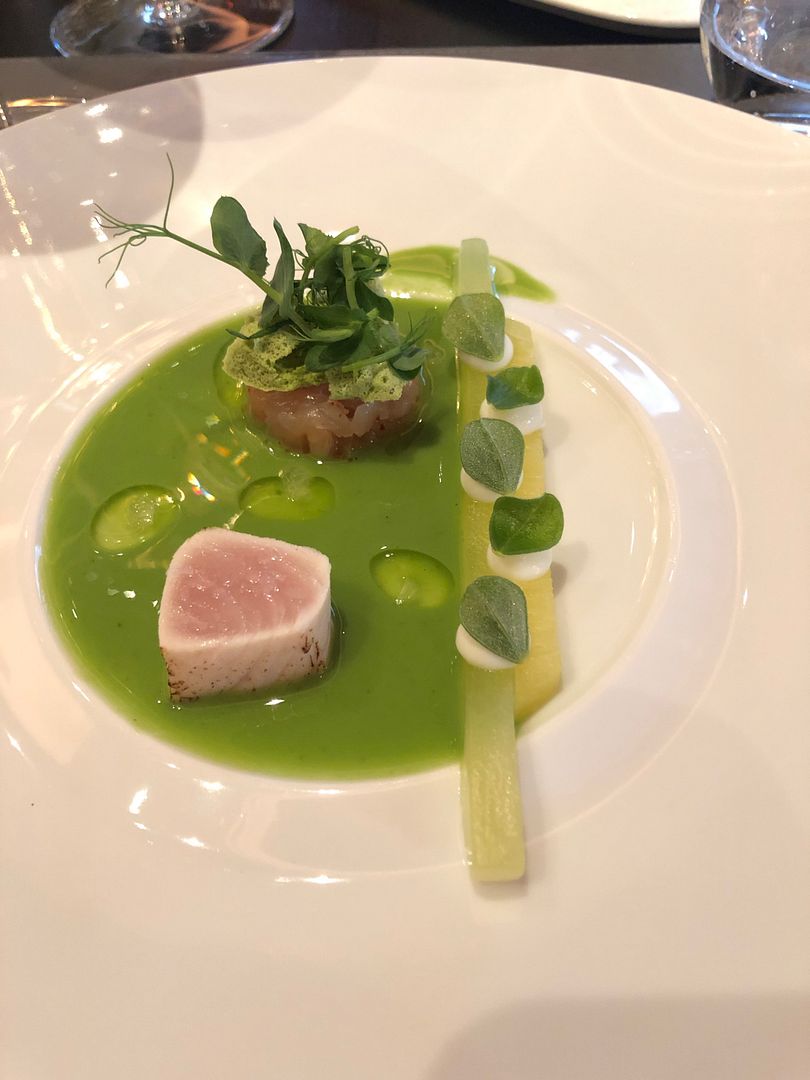
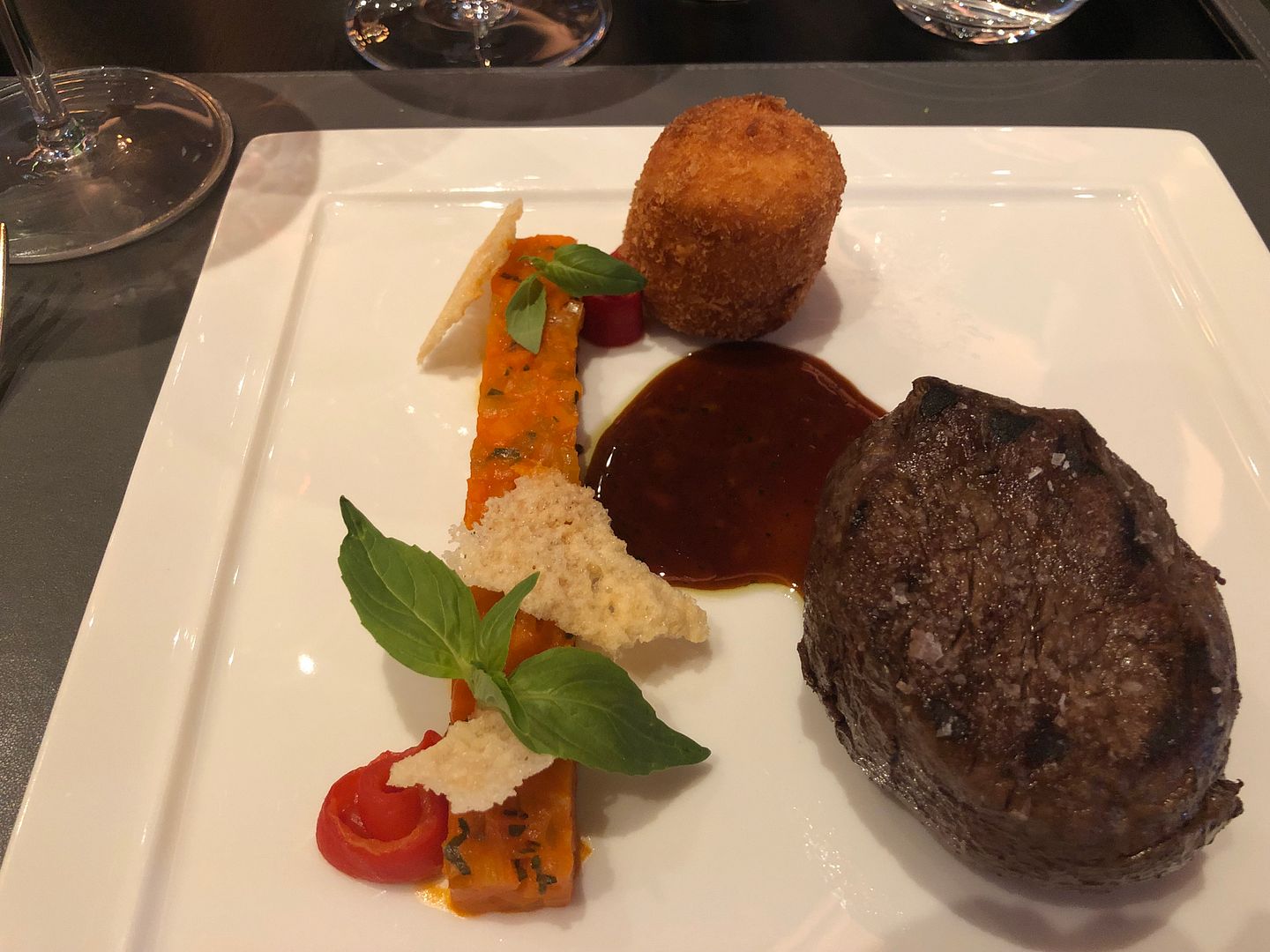
In the morning, breakfast is in the kitchen, presenting a vast traditional German buffet. There is a great sense of relaxation, partially because there is virtually nobody here, and all is silent apart from the noise of the birds.
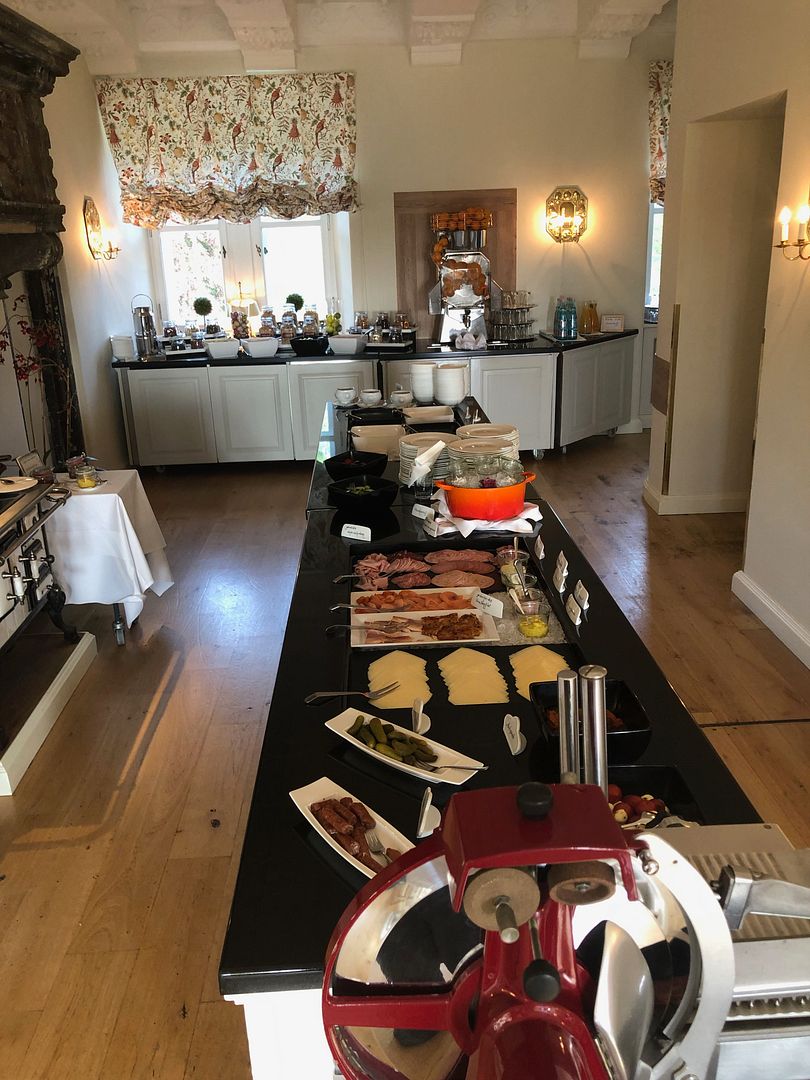
I was relived to know that the bacon contained pork:
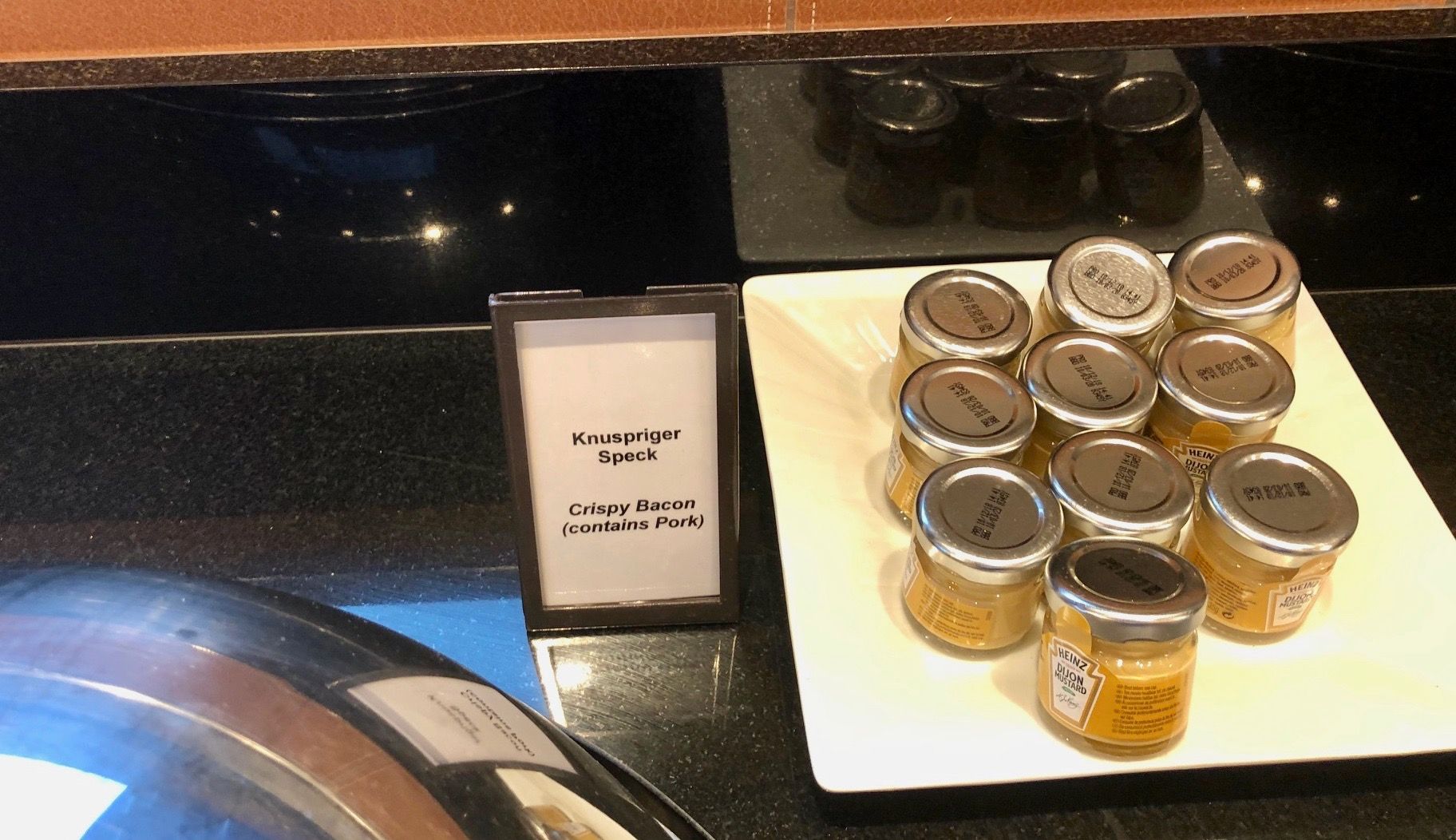
A great first night on the road.
Nearby is the town of Bodenwerder. Baron Munchhausen is famed in Germany as a huge fantasist who told his friends of improbable adventures of less and less believability,but the entertainment factor was huge.
The town is real enough however and he was really born here. He used to tell these tales to his friends over a beer or two and somebody published a book of his stories at the time, much to his embarrassment.The book had been in print in multiple languages ever since. His home still stands and is a small museum.
Most famously Munchhausen is depicted riding on a cannonball. He told his friends that he had been engaged in a military action and wanted to see the enemy encampment. He jumped on a cannonball. On the way over, he realized that when he landed that he would be captured, so he leapt off his cannonball and caught one from the enemy, thus transporting him back to safety.
There are several sculptures of his horse. He alleged that he was fleeing on the horse when the town gates shut suddenly. He stopped to water the horse, who just drank and drank. Looking behind him he noticed that the horse had not escaped the gate but had been cut in two. The horse just drank and kept spewing water.
There are many such stories illustrated in the town.
Strangely there is a medical condition named after the Baron called Munchhasuen syndrome, which is lying or medicating yourself of others to attract attention ,and the local pharmacy has an illustration of the good Baron popping a few pills…



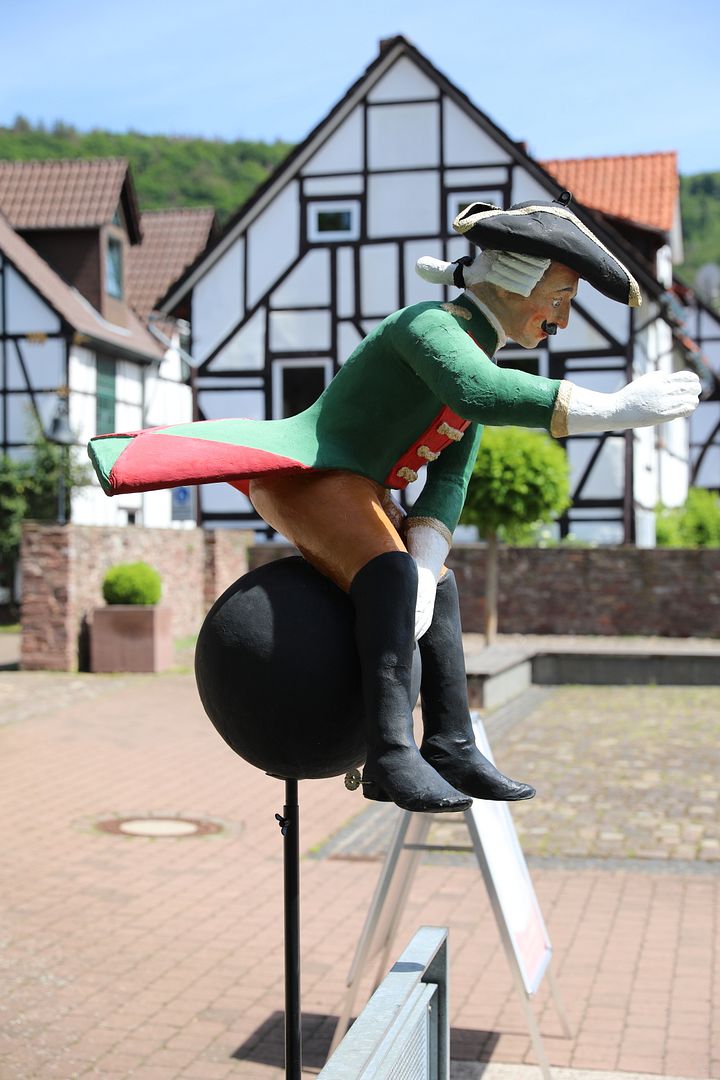





The setting was magnificent. Despite the spacious environment the entrance was very narrow, but then there was a spacious courtyard that dwarfs the car. The Schlosshotel Munchhausen is magnificent. Inside, the lobby is huge and timbered.
Dinner here is excellent and not hugely expensive, but outstanding. Every dish was EUR15.70 to commemorate the founding date of the building, with the size being adjusted for the more expensive ingredients.


In the morning, breakfast is in the kitchen, presenting a vast traditional German buffet. There is a great sense of relaxation, partially because there is virtually nobody here, and all is silent apart from the noise of the birds.

I was relived to know that the bacon contained pork:

A great first night on the road.
Nearby is the town of Bodenwerder. Baron Munchhausen is famed in Germany as a huge fantasist who told his friends of improbable adventures of less and less believability,but the entertainment factor was huge.
The town is real enough however and he was really born here. He used to tell these tales to his friends over a beer or two and somebody published a book of his stories at the time, much to his embarrassment.The book had been in print in multiple languages ever since. His home still stands and is a small museum.
Most famously Munchhausen is depicted riding on a cannonball. He told his friends that he had been engaged in a military action and wanted to see the enemy encampment. He jumped on a cannonball. On the way over, he realized that when he landed that he would be captured, so he leapt off his cannonball and caught one from the enemy, thus transporting him back to safety.
There are several sculptures of his horse. He alleged that he was fleeing on the horse when the town gates shut suddenly. He stopped to water the horse, who just drank and drank. Looking behind him he noticed that the horse had not escaped the gate but had been cut in two. The horse just drank and kept spewing water.
There are many such stories illustrated in the town.
Strangely there is a medical condition named after the Baron called Munchhasuen syndrome, which is lying or medicating yourself of others to attract attention ,and the local pharmacy has an illustration of the good Baron popping a few pills…




#4
The plan was to drive through North Central Germany including the Harz Mountains, pivot in Berlin and then run back across the Baltic and into Denmark.

There was an unexpected problem.
Flooding from swollen rivers.
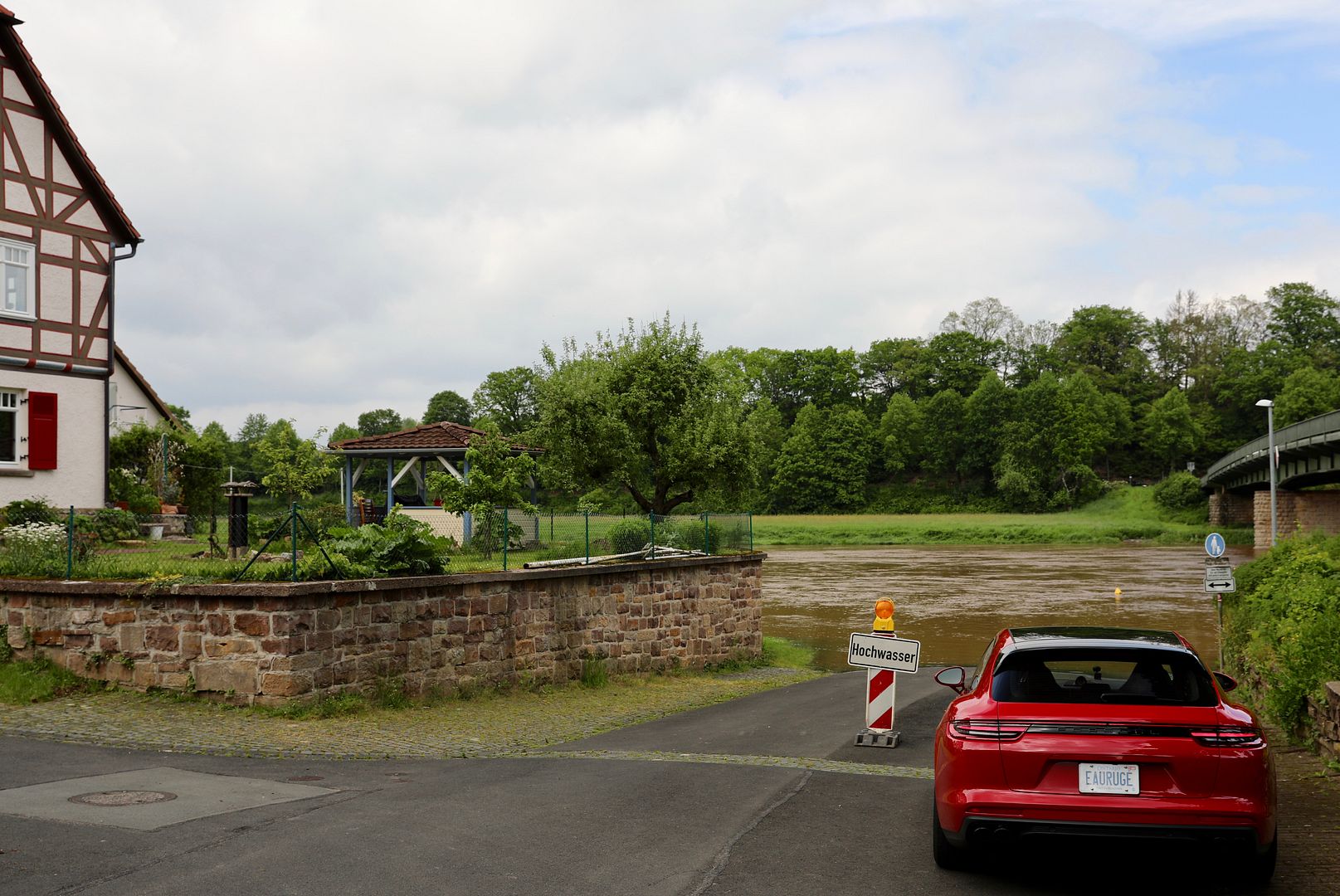
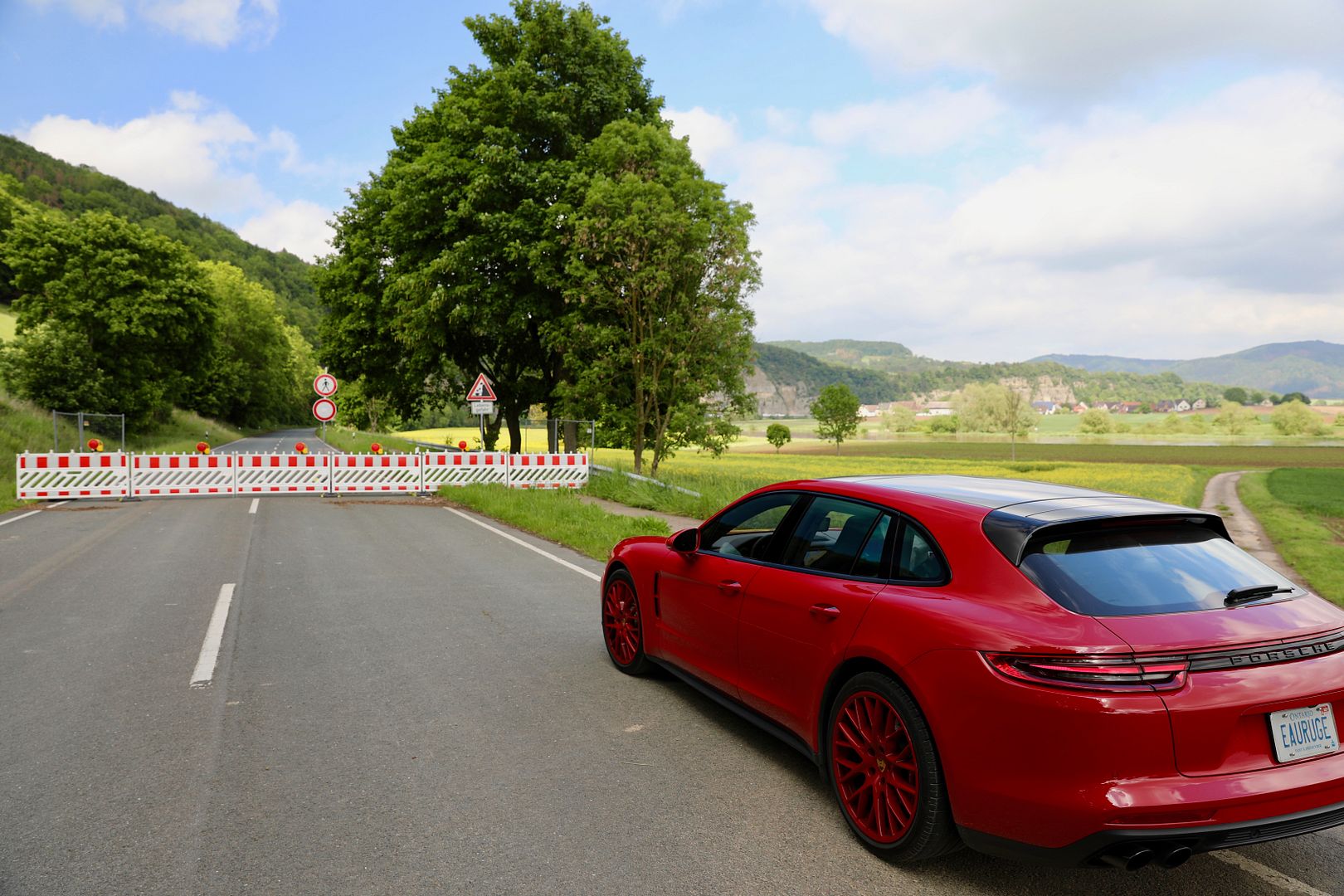

Once arriving in the rural areas there were numerous road closures, and Nav systems do not do a good job in such circumstances, so a fair bit of detouring was needed. However, the weather was pleasant, the roads beautiful and winding. Small villages frequently have speed cameras in this area. A couple of souvenir notices may well be in the mail.
Nav systems are useless for planning purposes and it makes sense to have the old-fashioned detailed Michelin regional maps as well as use the route guidance apps for planning, but to take the maps with you . Even with maps, TomTom and experience a whole series of road closures can cause you to ping back and forth trying to find a way forward.
As just about every road was new it was important to leave plenty of leeway in driving time, so breakfast, no lunch, and arrive at least an hour at the hotel before any dinner booking.
In general I do not love long night-driving trips, so essentially all driving was by day.
At one point a whole series of alternative routes ended up with a pause to stare at the maps. An Audi A2 pulled up and the driver asked politely if directions were needed. Presumably the Canadian registration and the anxious look were clues. “ I’m going to choir practice, but the proper route is on my way”, he said, and he led through a series of narrow and twisting roads out of the maze.

There was an unexpected problem.
Flooding from swollen rivers.



Once arriving in the rural areas there were numerous road closures, and Nav systems do not do a good job in such circumstances, so a fair bit of detouring was needed. However, the weather was pleasant, the roads beautiful and winding. Small villages frequently have speed cameras in this area. A couple of souvenir notices may well be in the mail.
Nav systems are useless for planning purposes and it makes sense to have the old-fashioned detailed Michelin regional maps as well as use the route guidance apps for planning, but to take the maps with you . Even with maps, TomTom and experience a whole series of road closures can cause you to ping back and forth trying to find a way forward.
As just about every road was new it was important to leave plenty of leeway in driving time, so breakfast, no lunch, and arrive at least an hour at the hotel before any dinner booking.
In general I do not love long night-driving trips, so essentially all driving was by day.
At one point a whole series of alternative routes ended up with a pause to stare at the maps. An Audi A2 pulled up and the driver asked politely if directions were needed. Presumably the Canadian registration and the anxious look were clues. “ I’m going to choir practice, but the proper route is on my way”, he said, and he led through a series of narrow and twisting roads out of the maze.
#5
The town of Goslar is a wonderfully original classic mediaeval place , and unlike Southern Germany is not overtouristed. It is one of the most unmolested towns I have seen here. At time of visiting it was virtually empty.
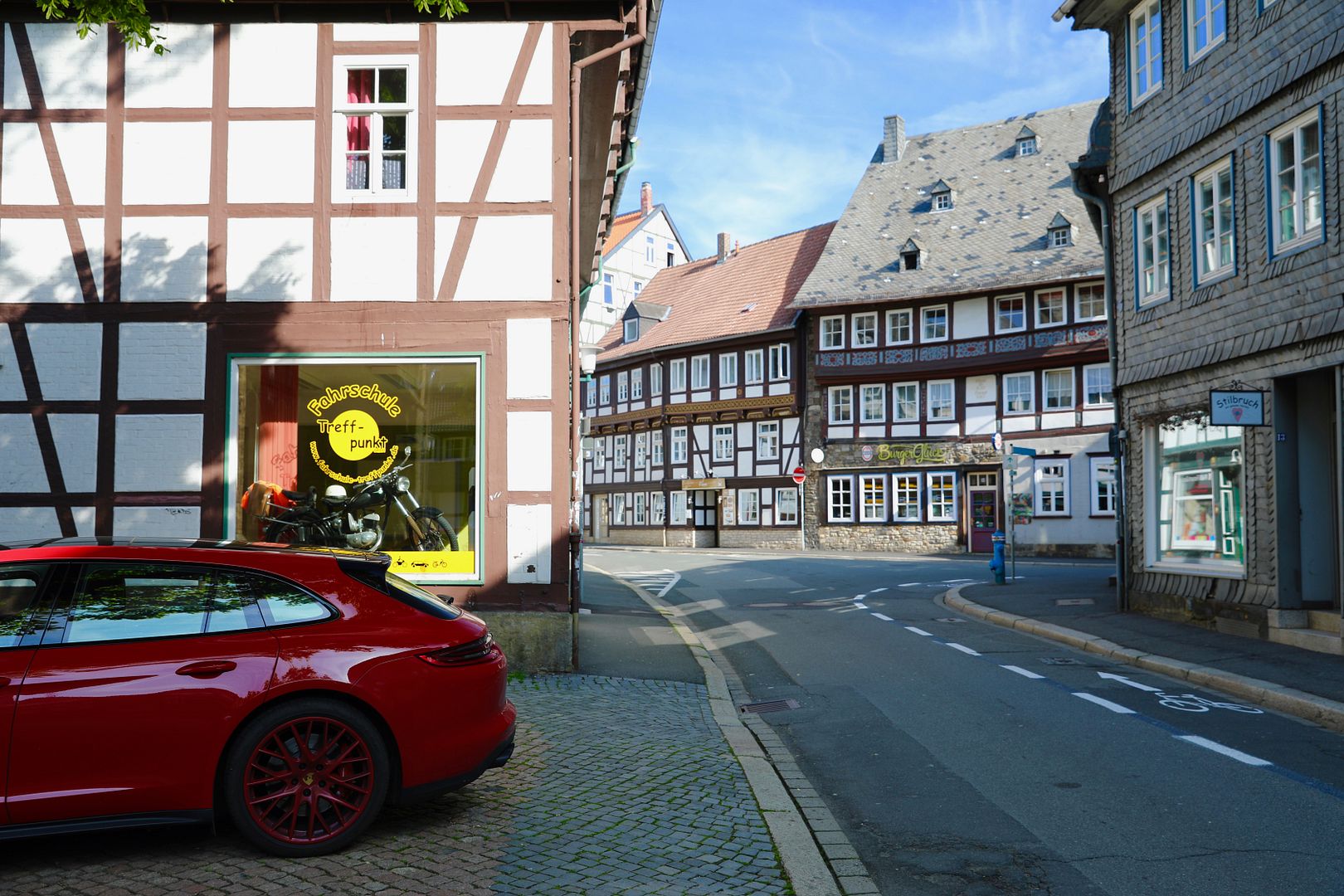

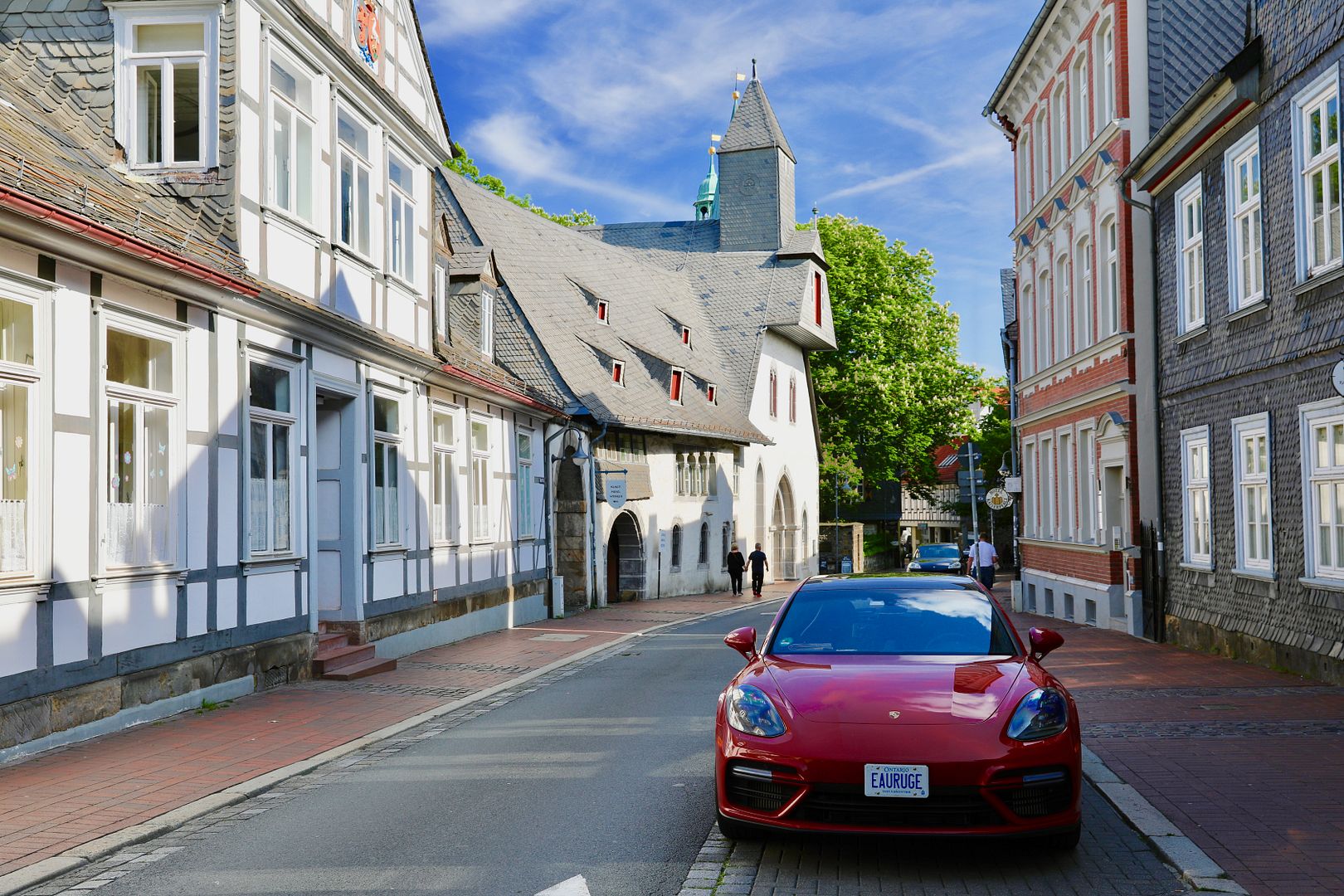
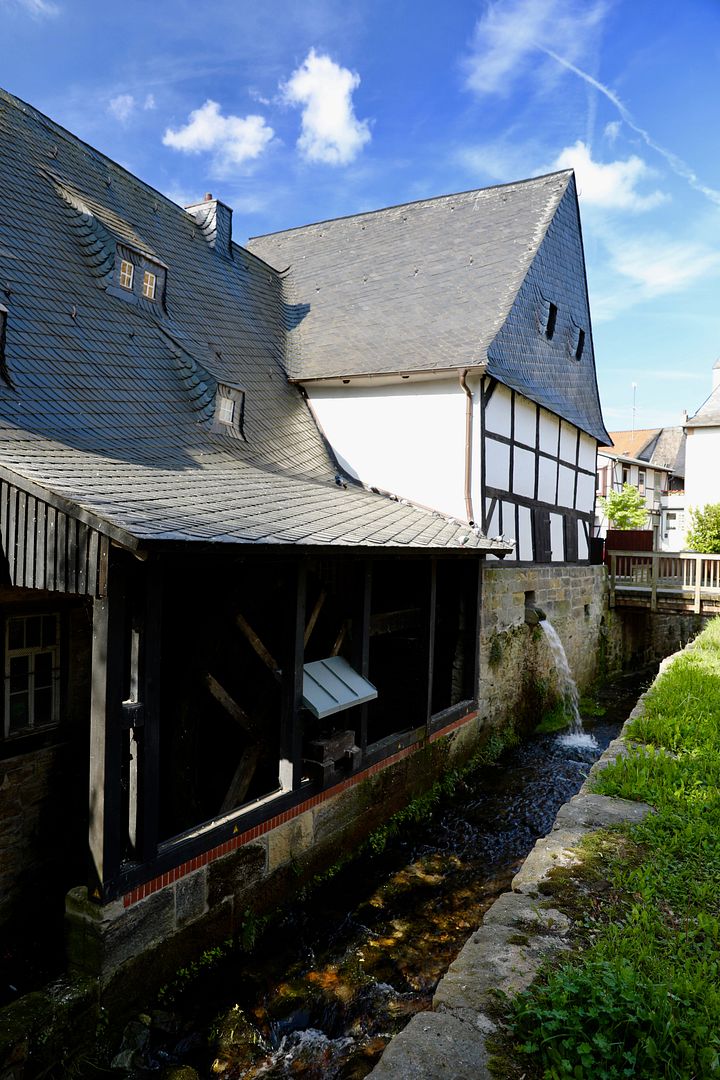
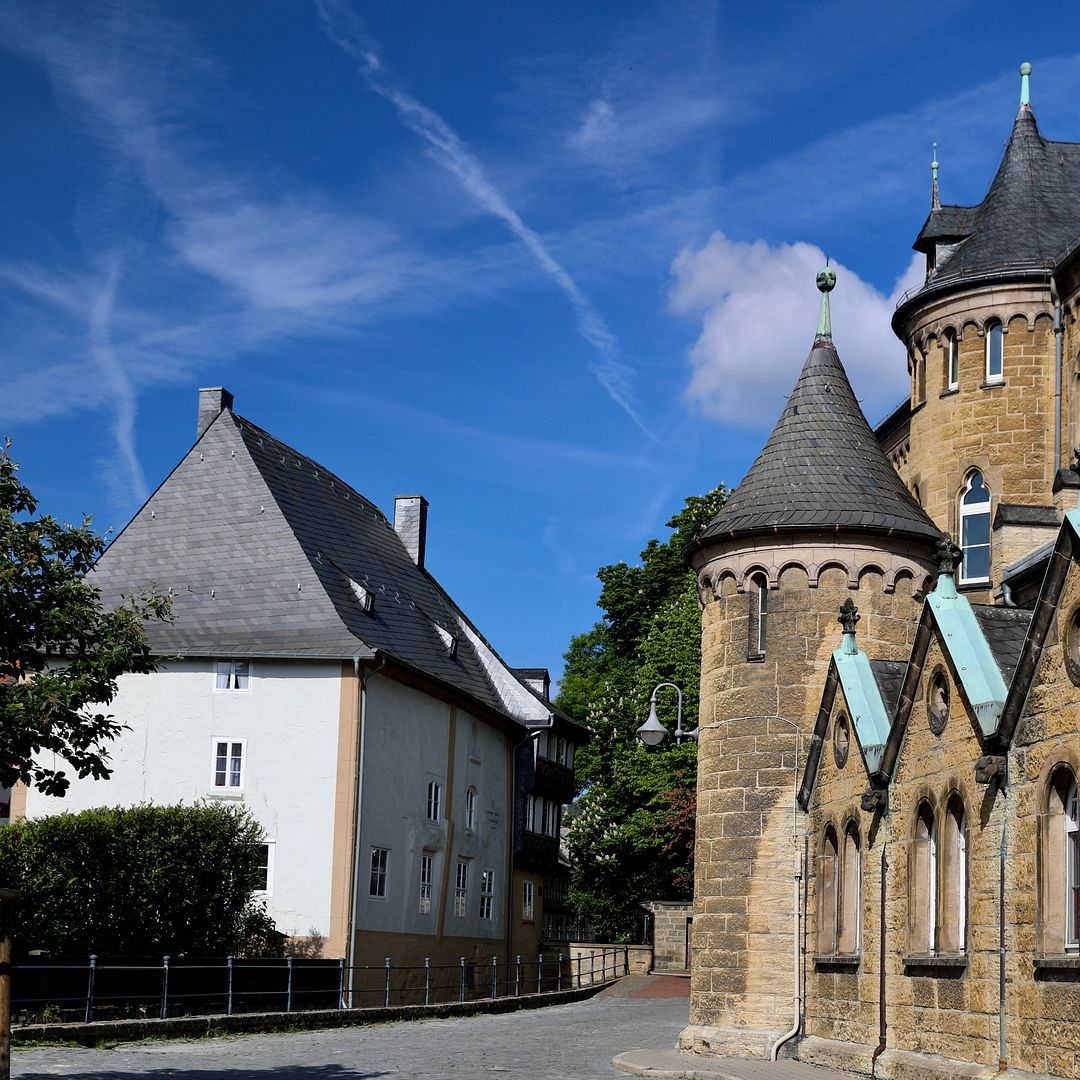
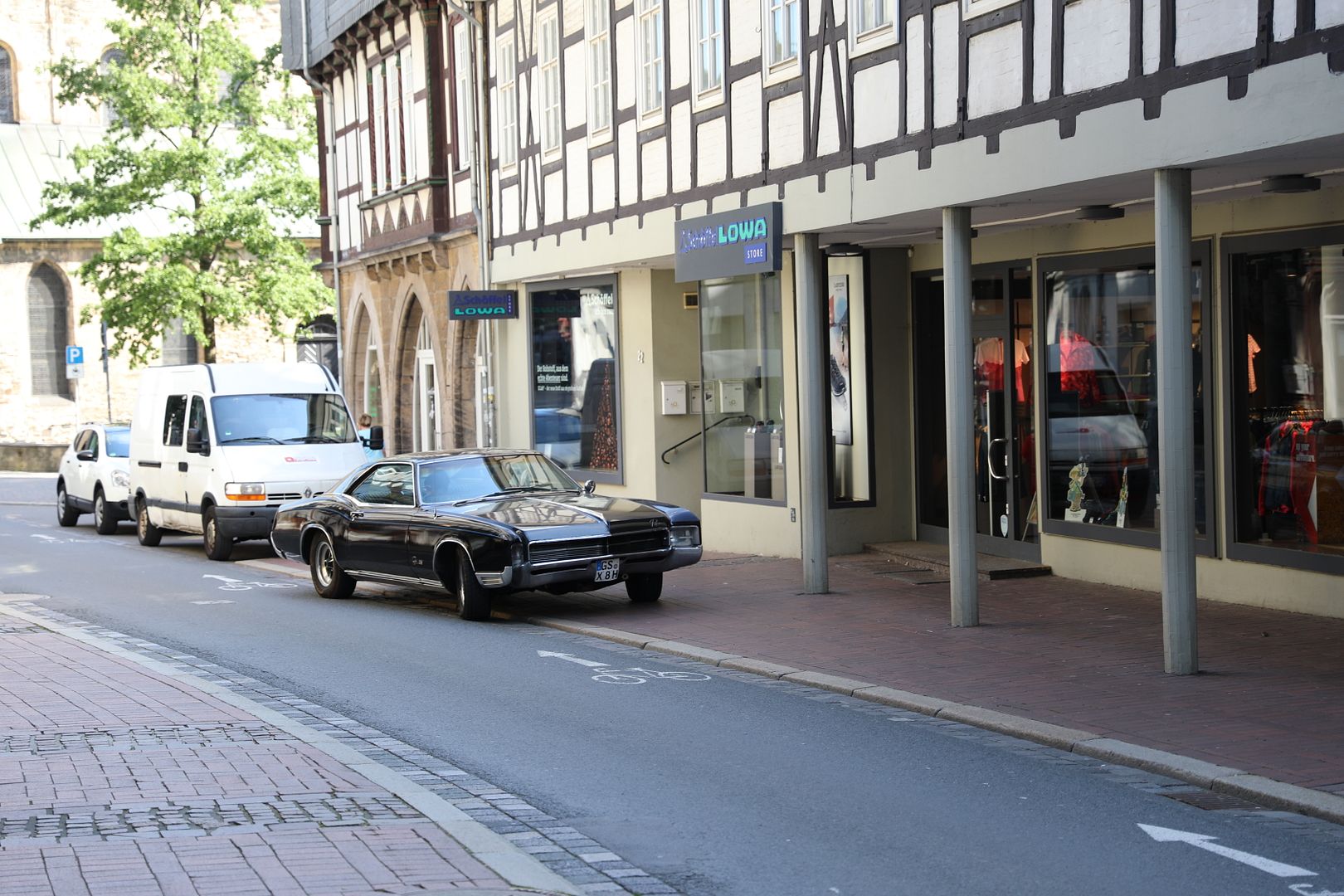
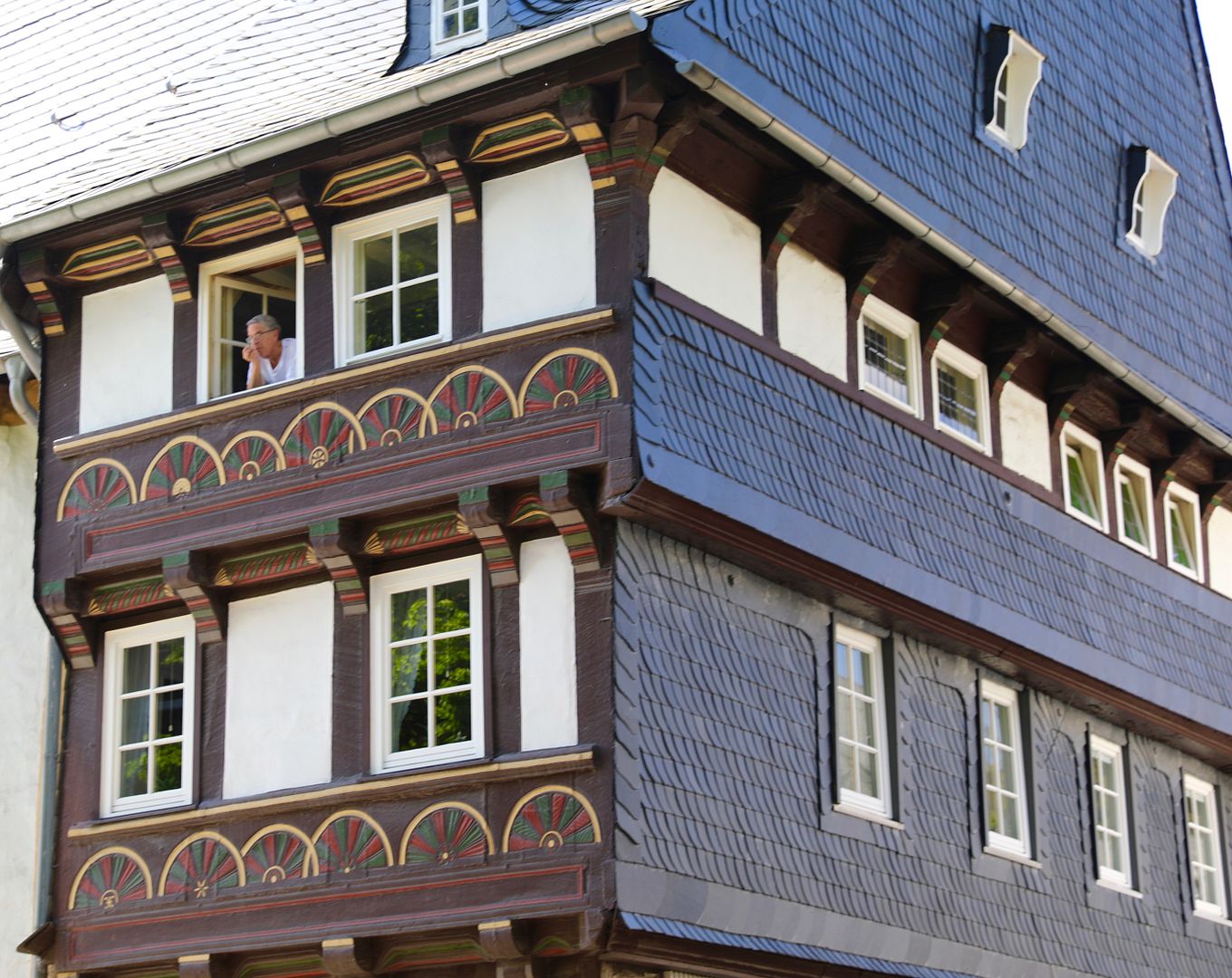







#6
Berlin is perhaps my favourite city in continental Europe, with a constant level of change. For this trip it was a whistlestop. I have a quirk in that I take a photo of each car at the Brandenburg Gate. The timing could have been a bit better, as there was a huge demonstration about climate change and many people carrying placards against fossil fuels. Driving slowly through the crowds in a big red V8 was a little concerning, but there was plenty of good humour and no stoning. There have been other incidents that were less benign recently including cars being heavily stickered in Berlin with protests about fossil fuels.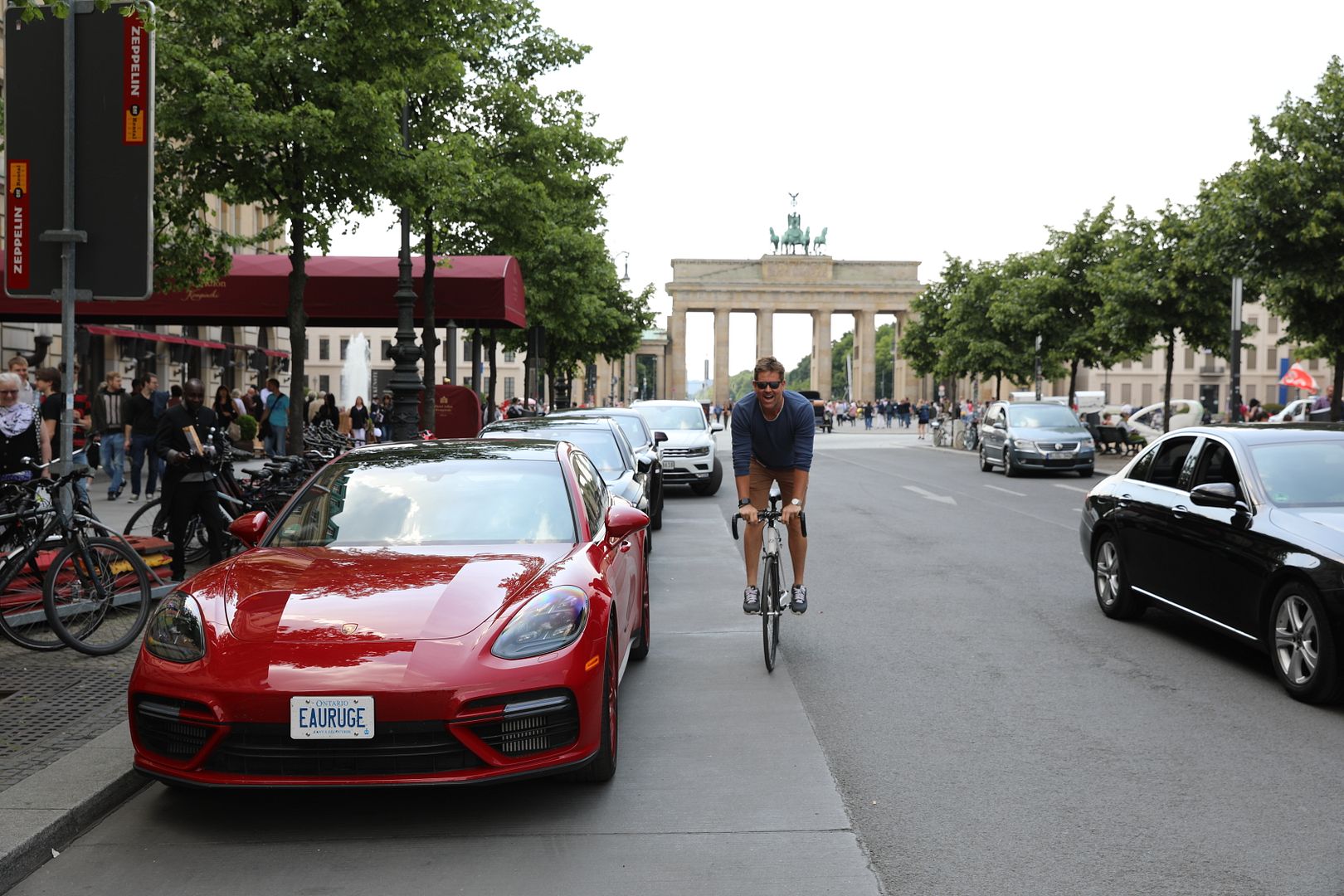

Trending Topics
#8
In North America few restaurants allow dogs on the premises, which never made sense to me. It was excellent to sit in a casual place in Berlin and see a well behaved dog at the neighbouring table.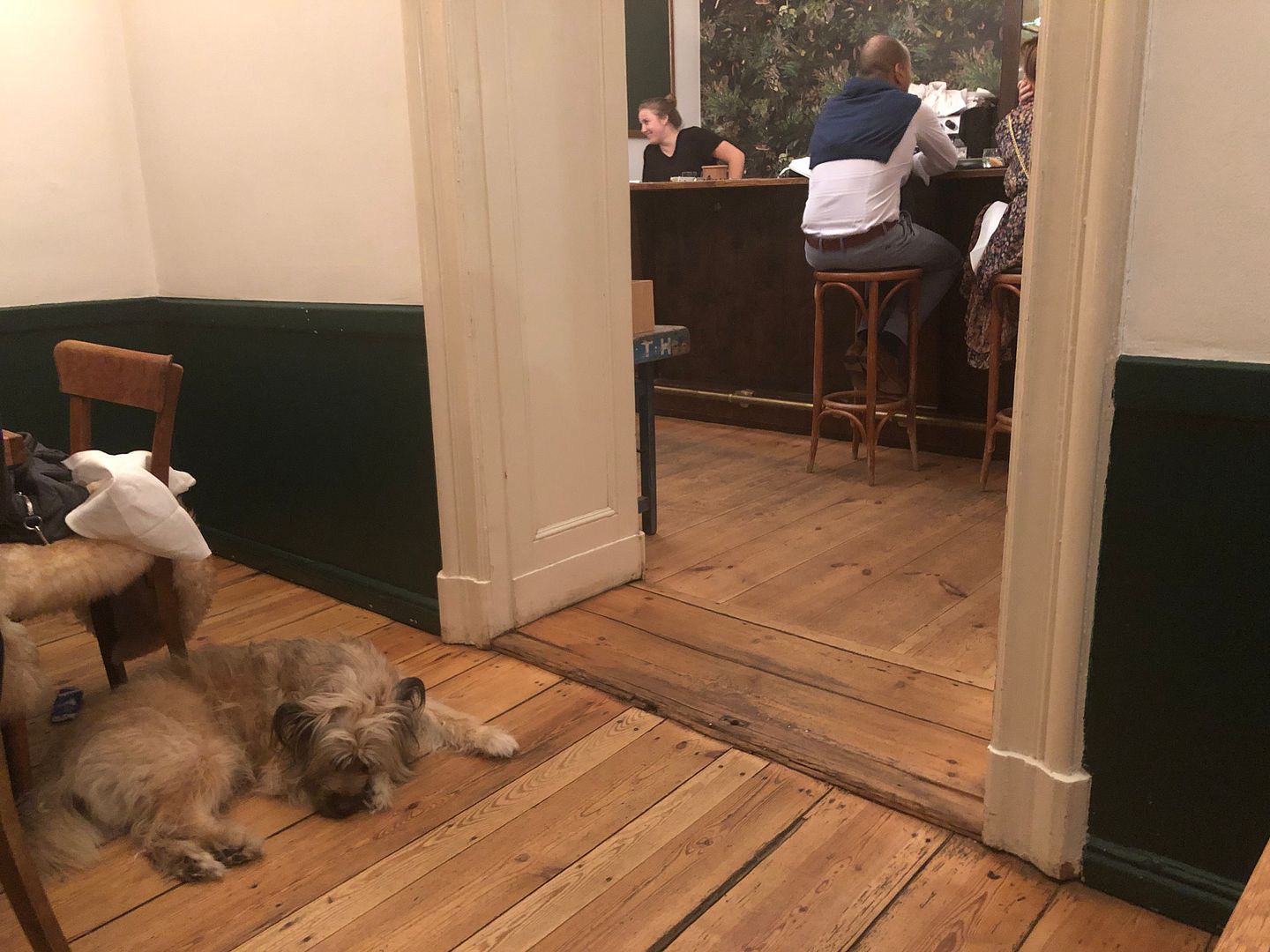

#9
Next morning it was time to head for the Baltic Coast en route to Denmark.
I have driven the autobahns here for decades and am fairly comfortable with the expected driving behaviour. Easing the Panamera onto the Bahn, I am as always impressed by the standard of driving. I am also very sure that the days of the unlimited autobahn are numbered. The Green movement in Germany is more vocal and more popular than ever before and is certainly not a fringe party any more. Consciousness of climate change is very high.
Before I came here many years ago, my assumption was that the roads were full of massively fast cars furiously flashing lights at anyone who got in the way, thundering up to the back of any slowcoach.
I was utterly mistaken.
If you are alert to everything around you, it is a brilliant pursuit. The key is to see ahead as far as possible, stay out of the fast lane if you are not passing, and be decisive on lane changes. Traffic in front of you is not expected to move out of the way if there is traffic on the right, so best to leave a comfortable gap to the car ahead until they comfortably merge. Drivers are competent, predictable and polite, they do not wait for you to get close before pulling over, and of course, I do the same. I never saw anyone texting or doing anything other than concentrating on driving. Most of he time when traffic is heavier it is quite a relaxing place to drive at a moderate pace and keep the speed of traffic and the represented quite a lot of the drive.
Undertaking is illegal, and unknown.
The Pana was made for this, and as the traffic lightens up the fast lane is fairly open. I get up to a comfortable 200km/h but quickly see approaching traffic behind and pull in . Brakes are excellent and steering very precise. The car isnroad mode is very quiet Over the coming days, I conclude that the autobahn tool par excellence seems to be a dark grey Audi Station wagon. In fact, all kinds of station wagons with big engines. The only serious bad driving I saw was a Belarus-registered Bentley,warpped and aggressive that was running up on the back of everyone and constantly changing lanes in heavy traffic.
I am passed by an M3 who seems to be on his limiter at one stage, and the Pana is very comfortable at 265 staying well behind him. On another strip a Cayenne Turbo S runs past well into similar speeds. Of course the usual 911s. In the end the maximum I run over the course of the trip is about 280km/h.
I had contemplated a vMax run one Sunday morning on this trip, but have always done these on brand new tires with carefully measured pressures on a virtually empty autobahn. I have about 5000km on these tires- decide to do it only if I need to change tires later in trip. As it happens the tires ( Pirelli pZero) have excellent wear and do not scrub off like the PS Cups I have used on previous cars. No vMax will happen. Porsche spec, typically conservative claims 307 km/h, so at a guess it is in the 315 range.
Choices of regular vehicle here are completely different. Most cars are hatchbacks or station wagons. I do not believe I saw a Macan for example. The Panamera is a rarity. Very few Toyota Prius either. The pickup truck here is for work, not pleasure. Cars are typically in excellent condition.
The autobahn remains one of the greatest automotive experiences if you are sensible. But…it will be gone in ten years I would think.
I have driven the autobahns here for decades and am fairly comfortable with the expected driving behaviour. Easing the Panamera onto the Bahn, I am as always impressed by the standard of driving. I am also very sure that the days of the unlimited autobahn are numbered. The Green movement in Germany is more vocal and more popular than ever before and is certainly not a fringe party any more. Consciousness of climate change is very high.
Before I came here many years ago, my assumption was that the roads were full of massively fast cars furiously flashing lights at anyone who got in the way, thundering up to the back of any slowcoach.
I was utterly mistaken.
If you are alert to everything around you, it is a brilliant pursuit. The key is to see ahead as far as possible, stay out of the fast lane if you are not passing, and be decisive on lane changes. Traffic in front of you is not expected to move out of the way if there is traffic on the right, so best to leave a comfortable gap to the car ahead until they comfortably merge. Drivers are competent, predictable and polite, they do not wait for you to get close before pulling over, and of course, I do the same. I never saw anyone texting or doing anything other than concentrating on driving. Most of he time when traffic is heavier it is quite a relaxing place to drive at a moderate pace and keep the speed of traffic and the represented quite a lot of the drive.
Undertaking is illegal, and unknown.
The Pana was made for this, and as the traffic lightens up the fast lane is fairly open. I get up to a comfortable 200km/h but quickly see approaching traffic behind and pull in . Brakes are excellent and steering very precise. The car isnroad mode is very quiet Over the coming days, I conclude that the autobahn tool par excellence seems to be a dark grey Audi Station wagon. In fact, all kinds of station wagons with big engines. The only serious bad driving I saw was a Belarus-registered Bentley,warpped and aggressive that was running up on the back of everyone and constantly changing lanes in heavy traffic.
I am passed by an M3 who seems to be on his limiter at one stage, and the Pana is very comfortable at 265 staying well behind him. On another strip a Cayenne Turbo S runs past well into similar speeds. Of course the usual 911s. In the end the maximum I run over the course of the trip is about 280km/h.
I had contemplated a vMax run one Sunday morning on this trip, but have always done these on brand new tires with carefully measured pressures on a virtually empty autobahn. I have about 5000km on these tires- decide to do it only if I need to change tires later in trip. As it happens the tires ( Pirelli pZero) have excellent wear and do not scrub off like the PS Cups I have used on previous cars. No vMax will happen. Porsche spec, typically conservative claims 307 km/h, so at a guess it is in the 315 range.
Choices of regular vehicle here are completely different. Most cars are hatchbacks or station wagons. I do not believe I saw a Macan for example. The Panamera is a rarity. Very few Toyota Prius either. The pickup truck here is for work, not pleasure. Cars are typically in excellent condition.
The autobahn remains one of the greatest automotive experiences if you are sensible. But…it will be gone in ten years I would think.
#10
The Baltic Coast has long been favoured as a resort area for Northern Germans, and continued to be so under Communist Rule. Some very large historical resorts dot the coast, interspersed with severe apartment worker blocks.
In the town of Bad Doberan sits the Grand Hotel Heiligendamm which is regarded as the very first coastal resort.
It apparently has an excellent spa, but this was just an overnight stay. It was far from full, but it is very easy to imagine this a hundred years ago with people promenading , parasols and boaters. There is a sense of calm here . srestaurant is exceptionally good.and the elegant row of seaside villas is known as “the White Pearls.” Beachcombing for authentic Baltic amber is a favourite activity, especially because the water never rises above 65F even in late summer, and because the winds can pit your face and body with authentic Baltic sand. Sensible turn-of-the-last-century Germans developed a straw beach chair that is almost a beach HUT, with a hood against the wind, footrests that pull out of a lower drawer, and side tables that emerge from the arms for drinks or sketching the views. The small restaurant is exceptionally good and has a Michelin star.

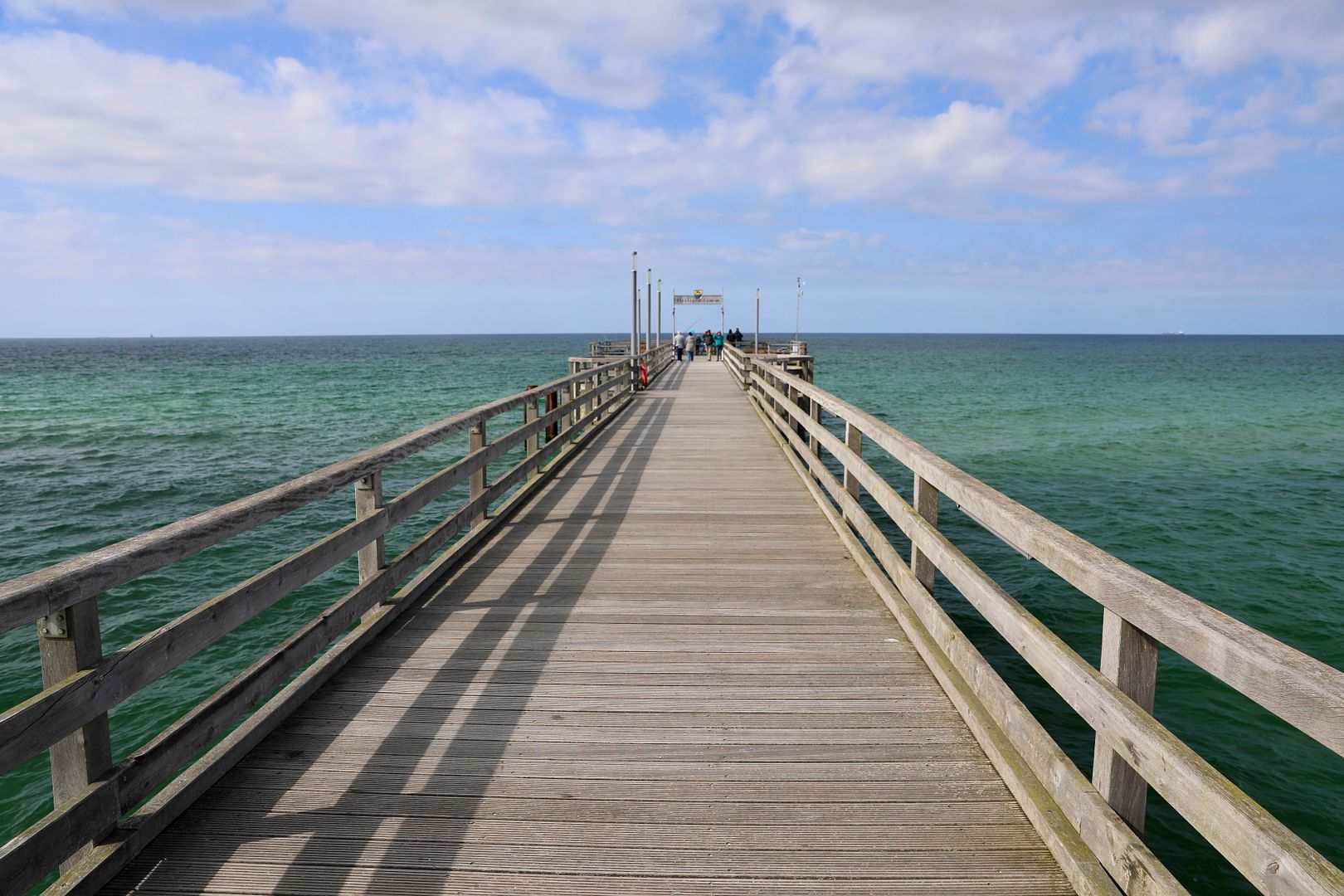
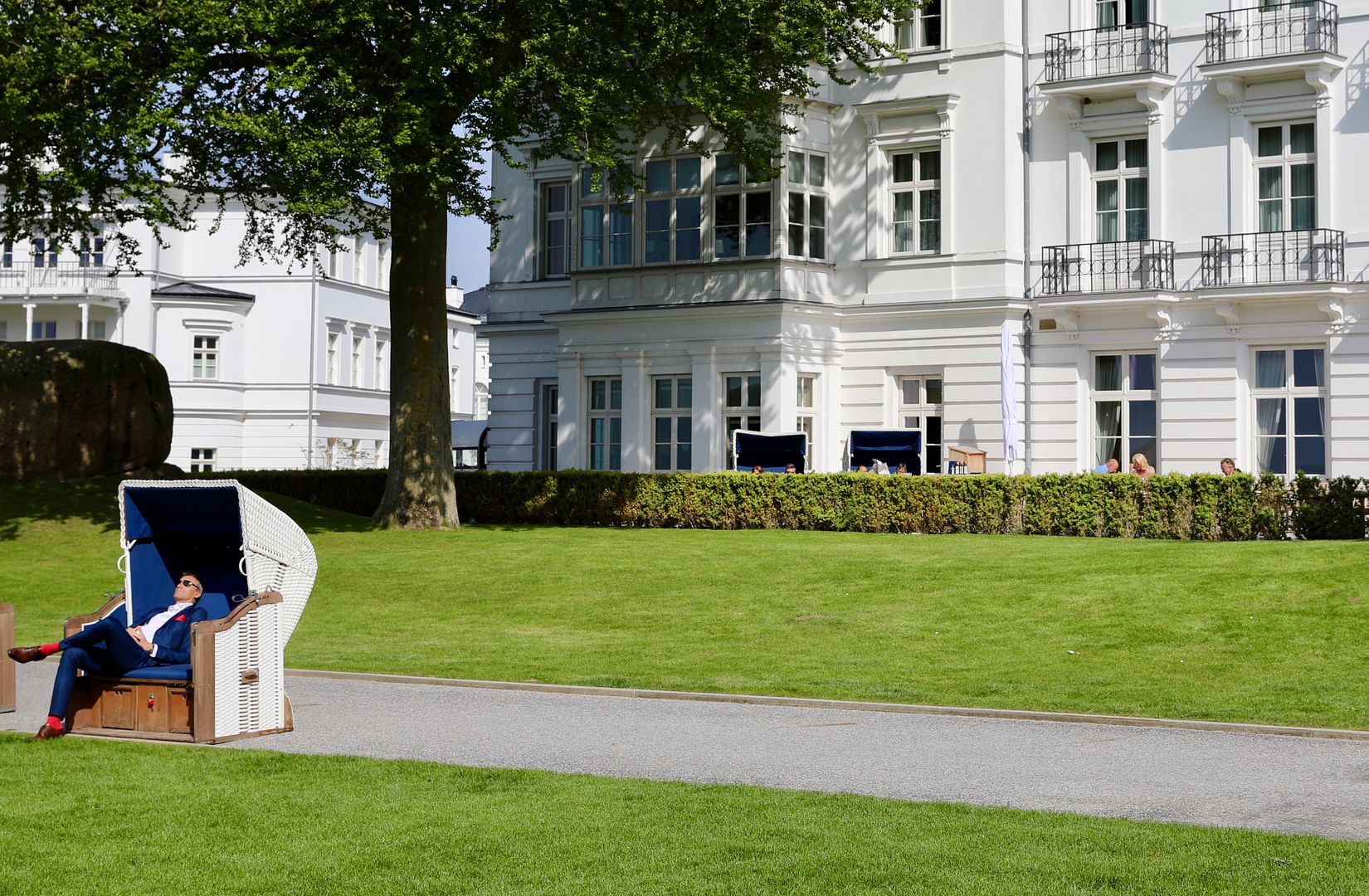
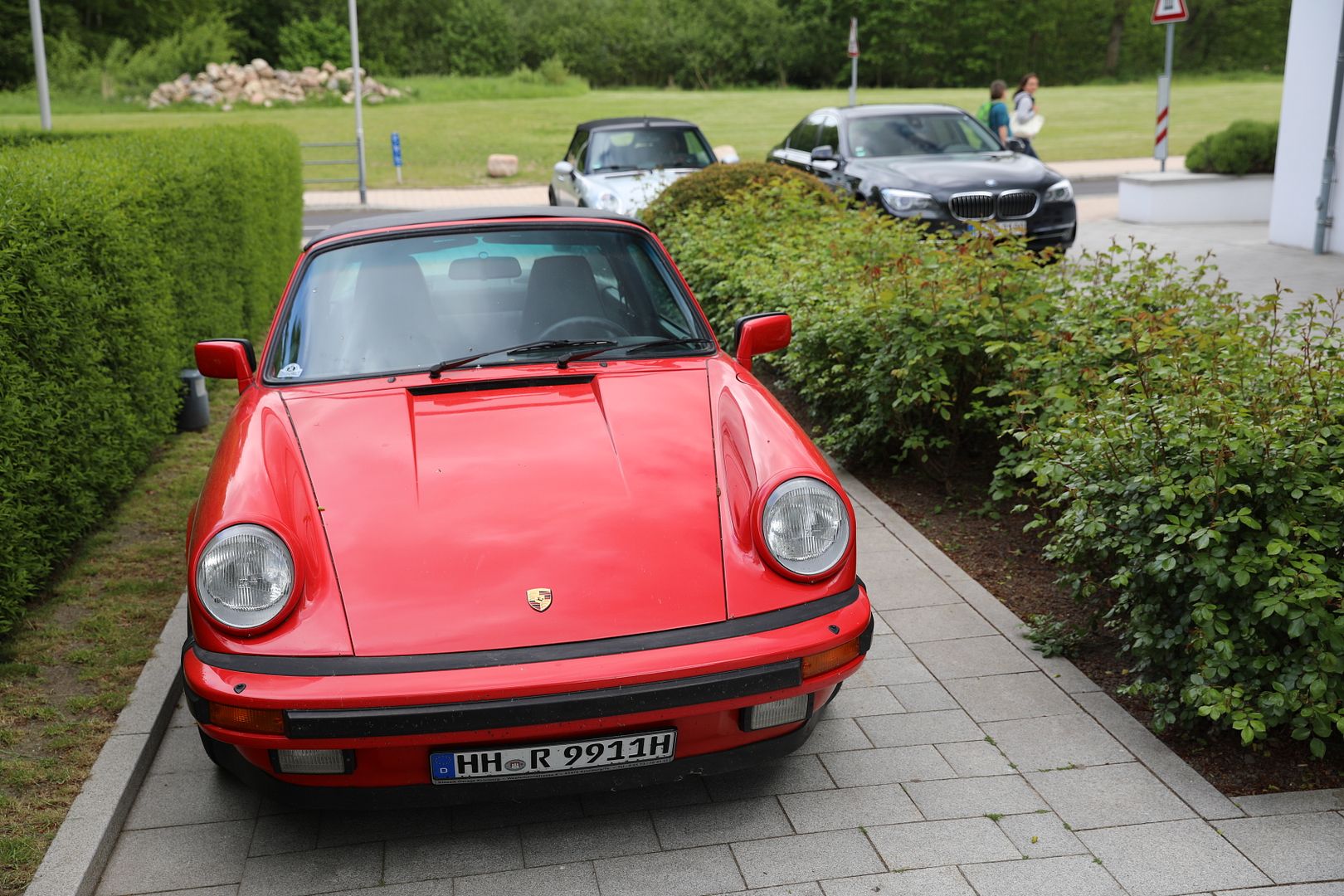
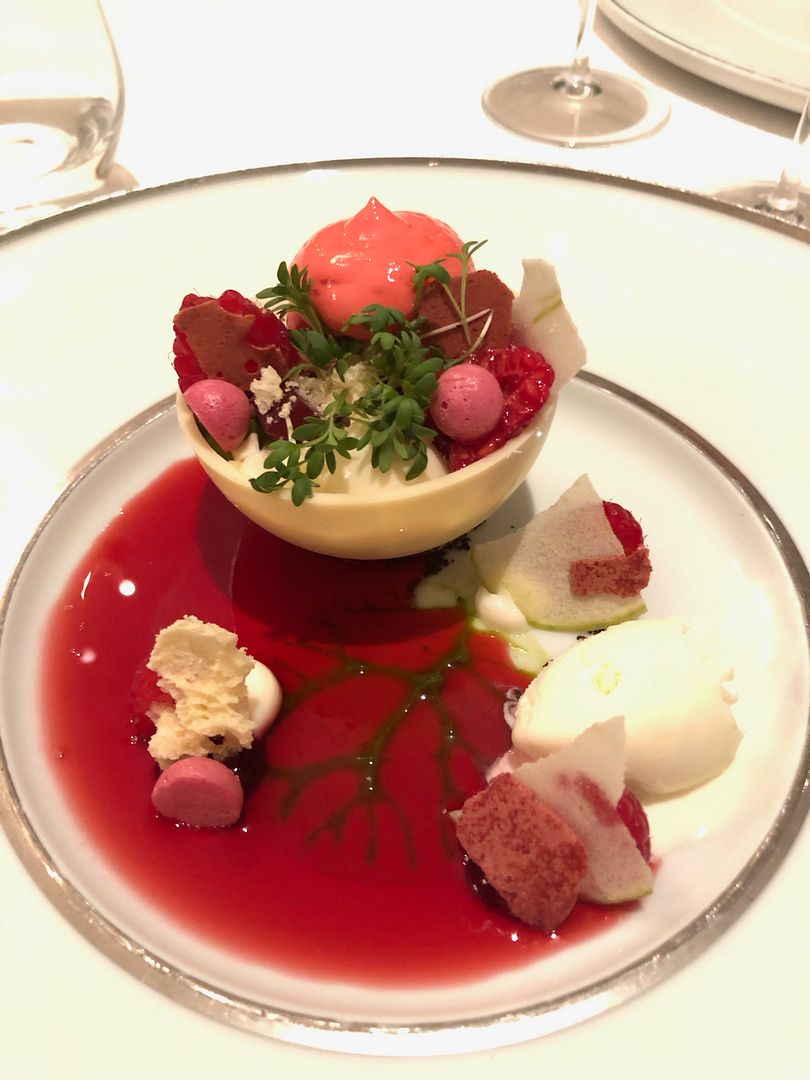
#11
Next morning it was time for the long drive to Denmark. It is much faster to catch the ferry, but I had no idea whether the ferry was good for the fairly vulnerable wheels on the Panamera and elected to drive straight through to Copenhagen. Did a quick drive through Lubeck which has a famous and ancient gate that has been leaning for many hundreds of years- did not stop as time was pressing:
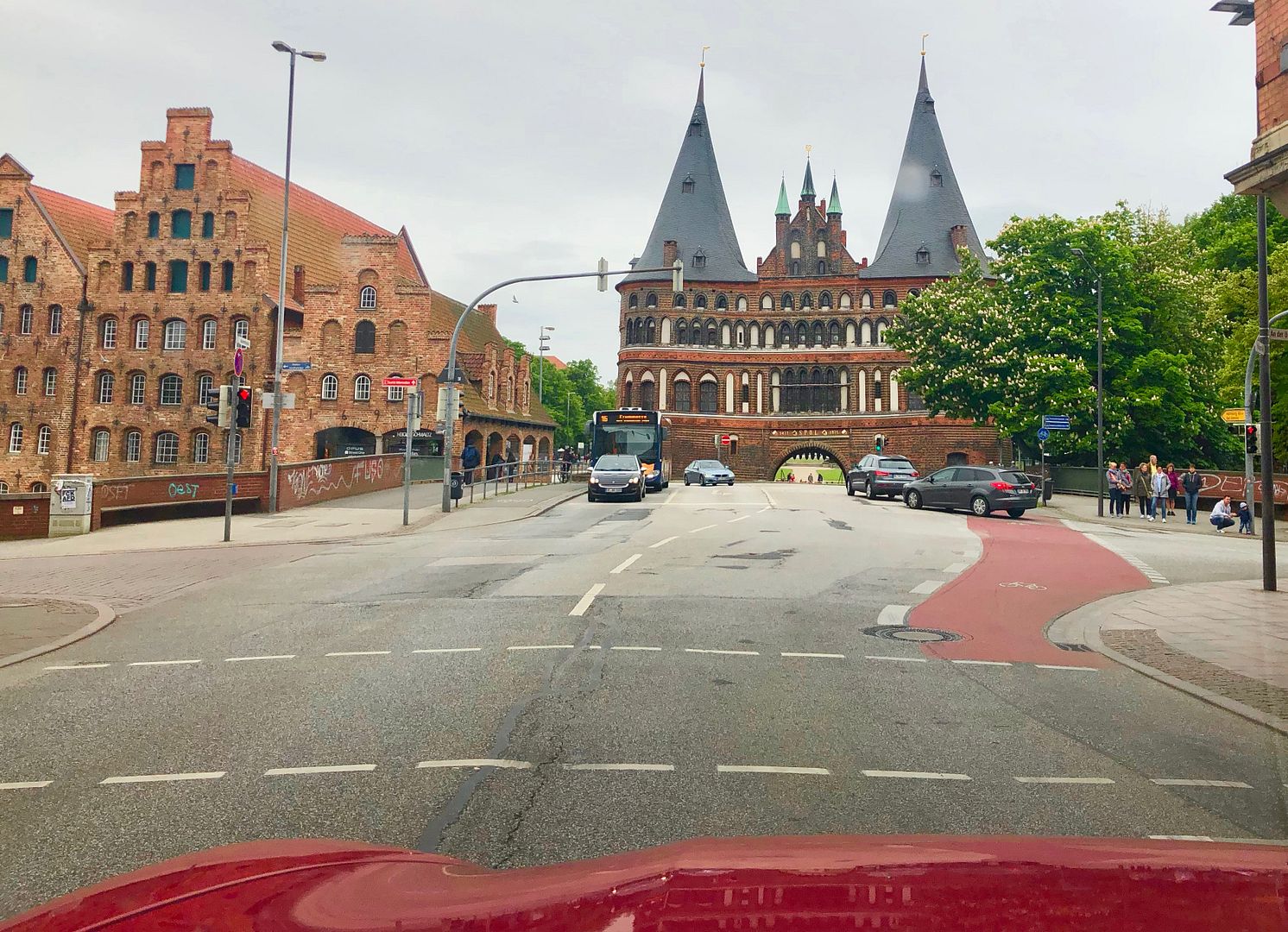

#12
The first surprise on entering Denmark is that Danes speed. I had assumed a high level of conformity to speed limits.
About 20km/h over the limit is very common and I had a Danish registered Audi TT blast past at 170 one time. Cars here are unbelievably expensive due to massive import duties.
Its a tedious drive across some very long and hugely windy bridges with the windsocks completely horizontal. The Pana is heavy but even so the side gusts are huge. There are no hills here.
I had not really ever thought much about Denmark. I assumed it was like the Netherlands. (drop the windmills, clogs and canals, add a Mermaid and there you have it- this was not an accurate view as I would find out.Danes as a people are tremendously helpful, friendly and fun. Absolutely everyone speaks excellent English and the quality of service is second to none.
The major cities are heavily pedestrianized, especially Copenhagen where the bicycle is king. Best to get the car parked for your stay. Parking is a nightmare in Copenhagen - availability of parking drove hotel decision as it did on every part of the trip.
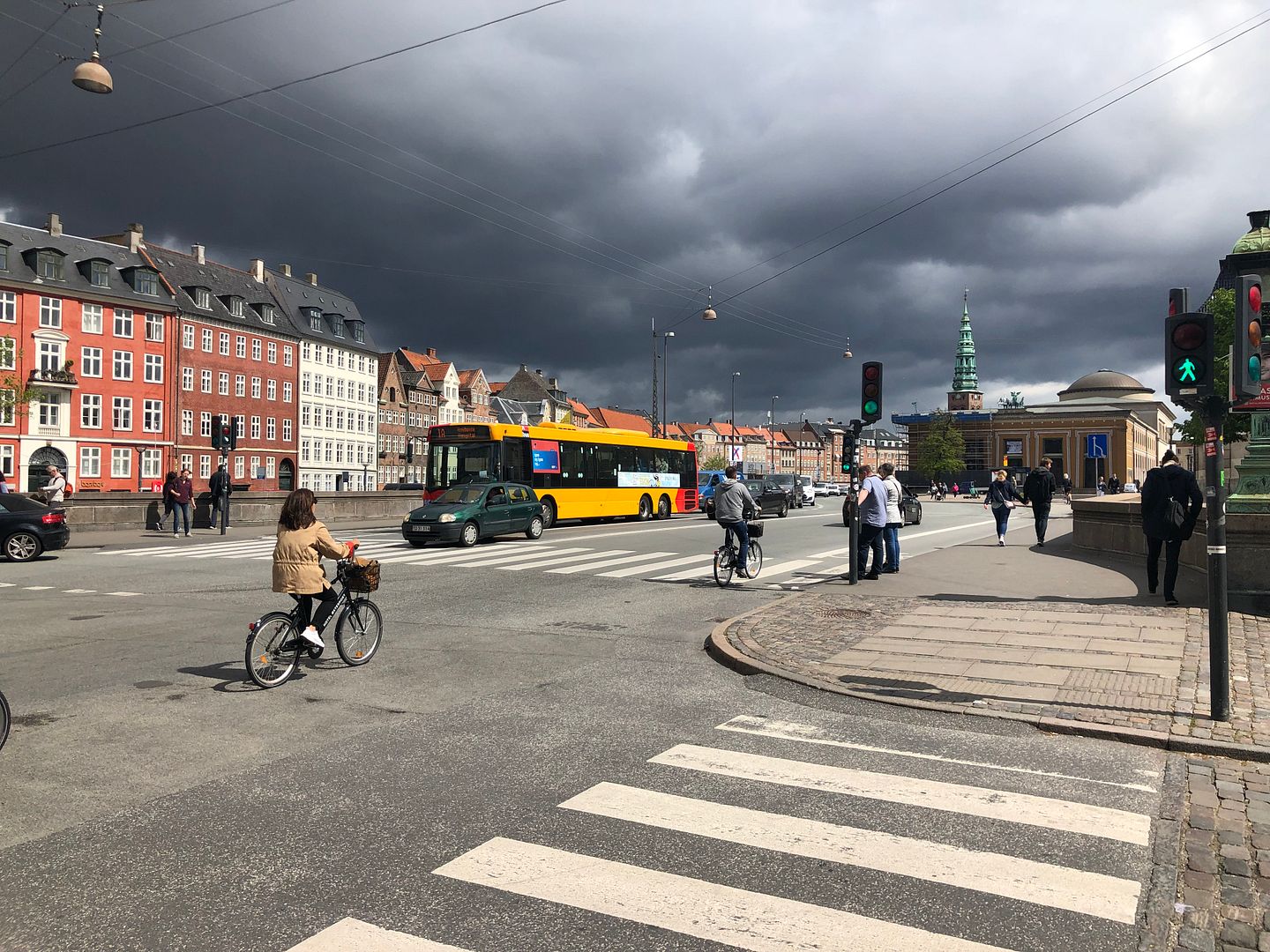
About 20km/h over the limit is very common and I had a Danish registered Audi TT blast past at 170 one time. Cars here are unbelievably expensive due to massive import duties.
Its a tedious drive across some very long and hugely windy bridges with the windsocks completely horizontal. The Pana is heavy but even so the side gusts are huge. There are no hills here.
I had not really ever thought much about Denmark. I assumed it was like the Netherlands. (drop the windmills, clogs and canals, add a Mermaid and there you have it- this was not an accurate view as I would find out.Danes as a people are tremendously helpful, friendly and fun. Absolutely everyone speaks excellent English and the quality of service is second to none.
The major cities are heavily pedestrianized, especially Copenhagen where the bicycle is king. Best to get the car parked for your stay. Parking is a nightmare in Copenhagen - availability of parking drove hotel decision as it did on every part of the trip.

#14
Exploring on foot would start the next day.
There are cities that practically everyone seems to have visited. Copenhagen is one of them. I had no real sense of the city as a first time visitor.
Copenhagen was never bombed in the war, was not razed by high rise developers, not destroyed by any natural cataclysm. It has one rather featureless high rise which caused such dislike by the populace that no more were permitted. As a result it is a city where you can see the sunset and has the sort of landscape where you can still see spires in the distance.
The best thing to do with your car is to dump it and walk or get a taxi. Danes all speak English and without exception were helpful, upbeat, friendly and a delight to deal with. Danish is apparently very difficult to learn and its impossible to begin to guess the pronunciation.
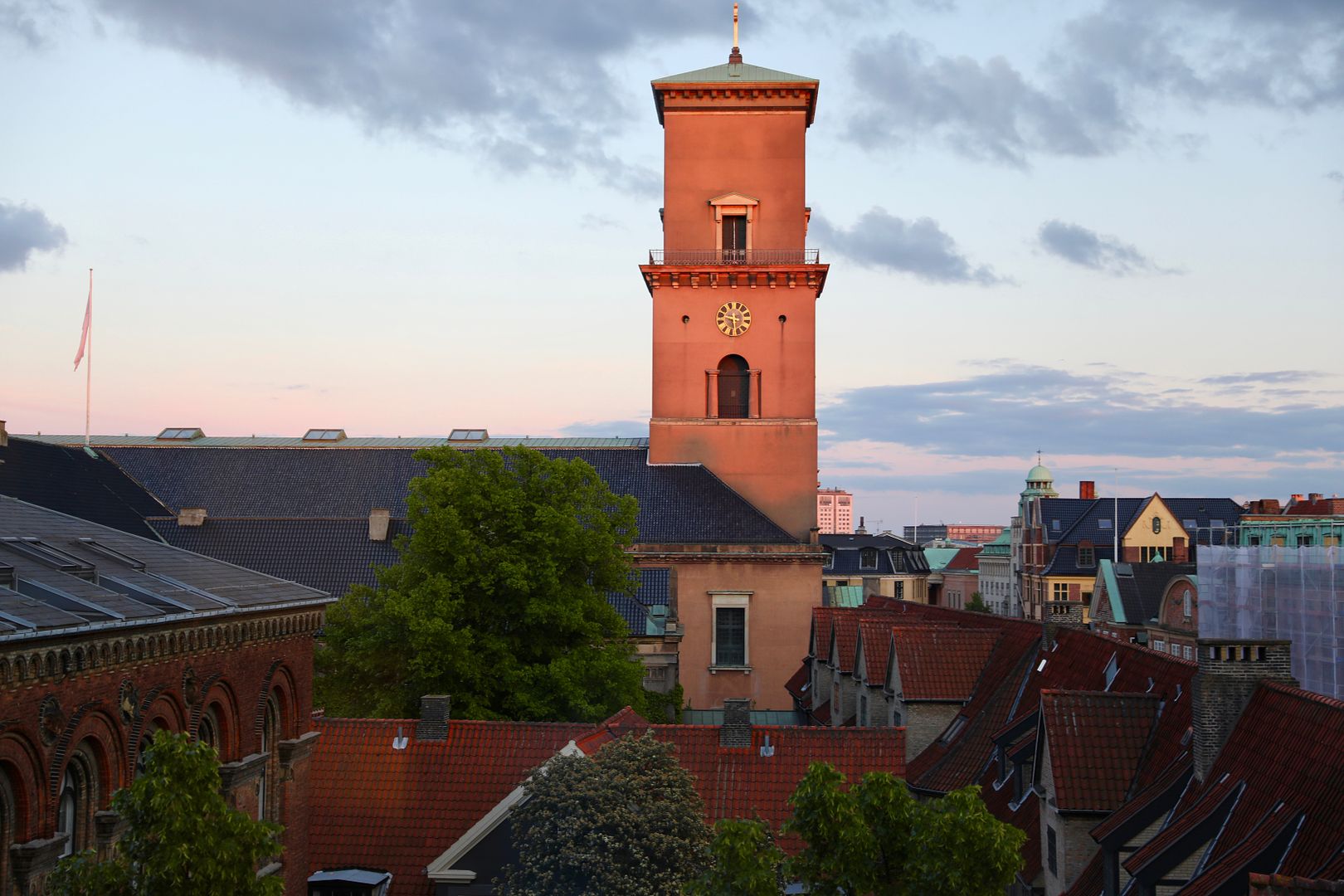
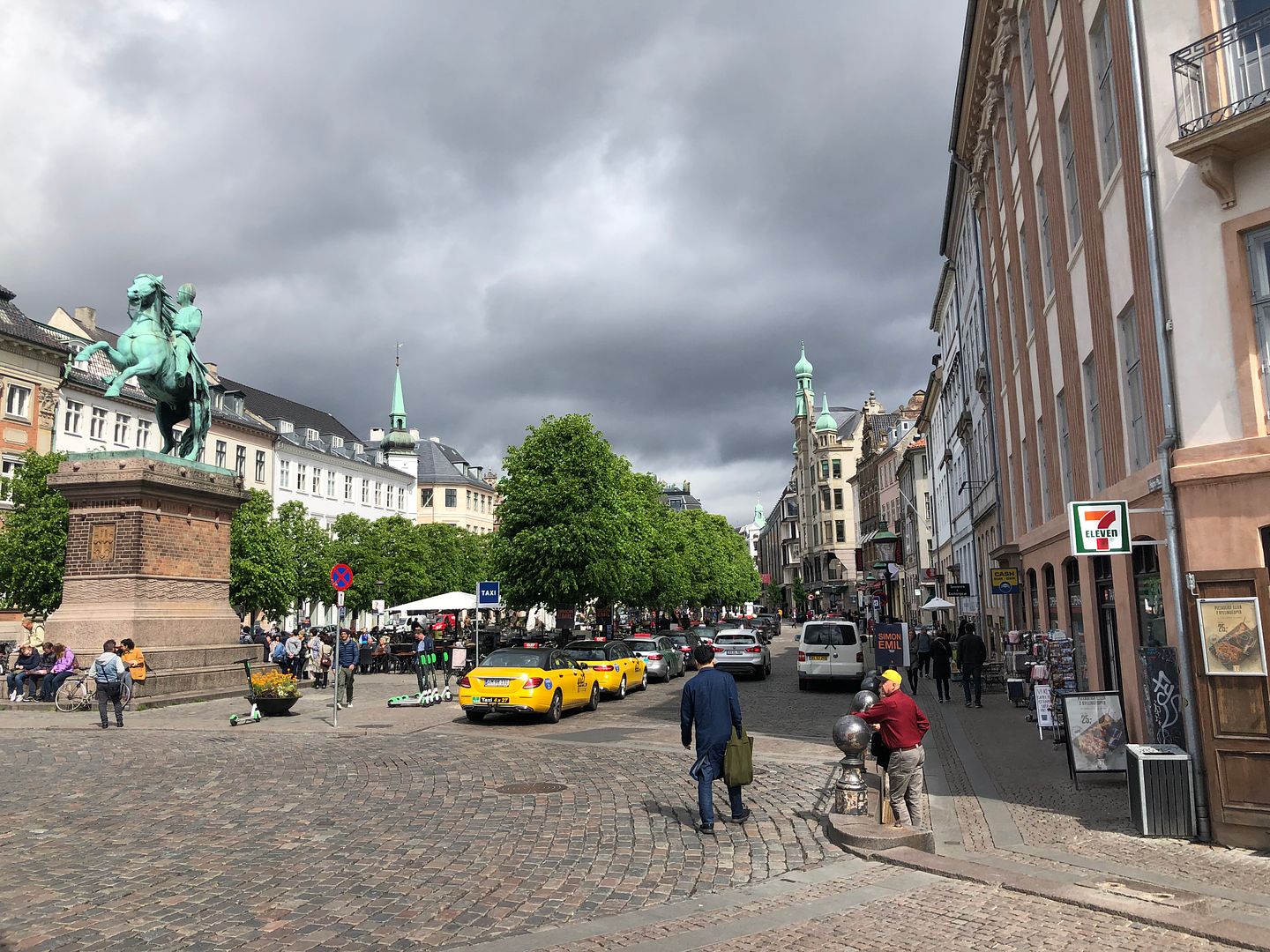
There are cities that practically everyone seems to have visited. Copenhagen is one of them. I had no real sense of the city as a first time visitor.
Copenhagen was never bombed in the war, was not razed by high rise developers, not destroyed by any natural cataclysm. It has one rather featureless high rise which caused such dislike by the populace that no more were permitted. As a result it is a city where you can see the sunset and has the sort of landscape where you can still see spires in the distance.
The best thing to do with your car is to dump it and walk or get a taxi. Danes all speak English and without exception were helpful, upbeat, friendly and a delight to deal with. Danish is apparently very difficult to learn and its impossible to begin to guess the pronunciation.





